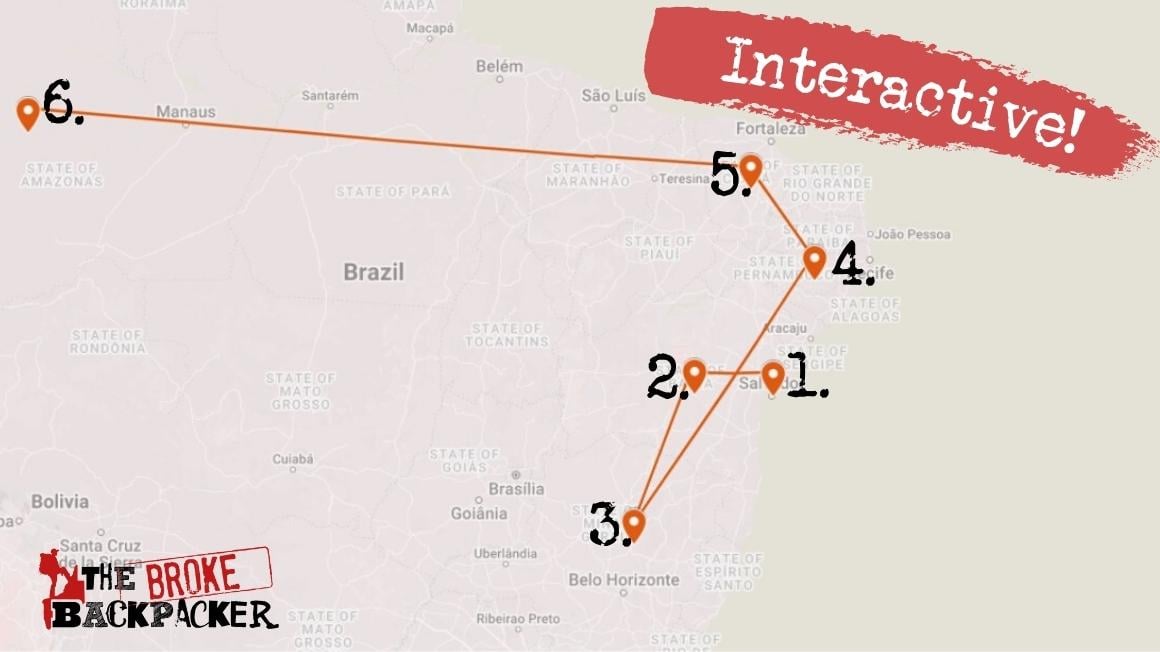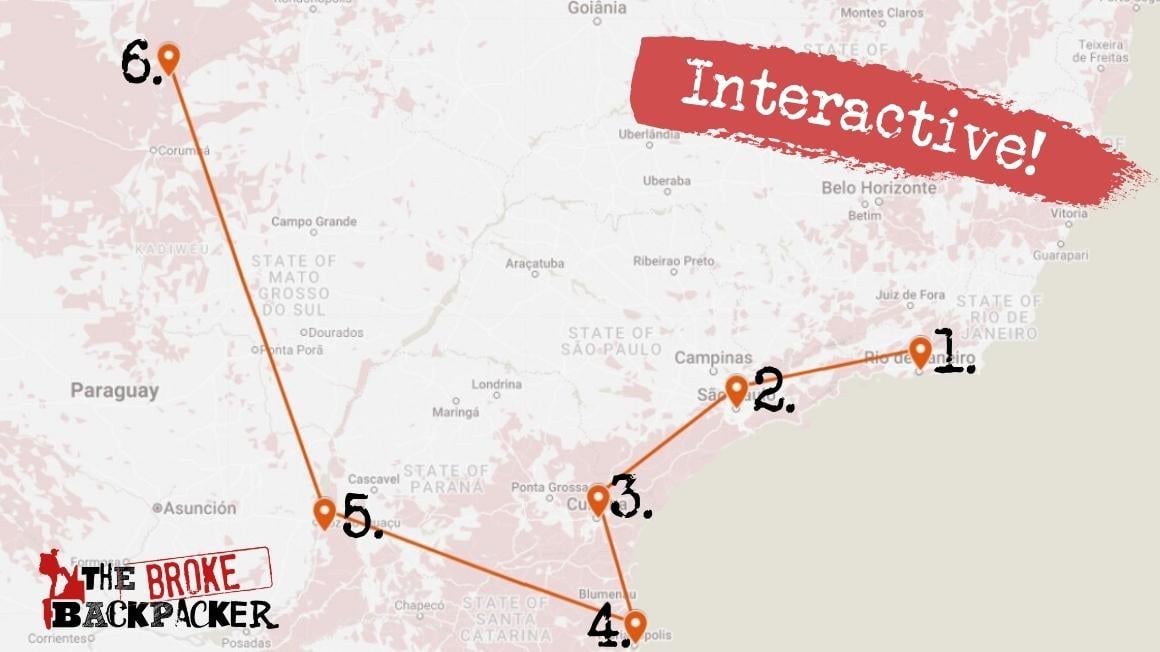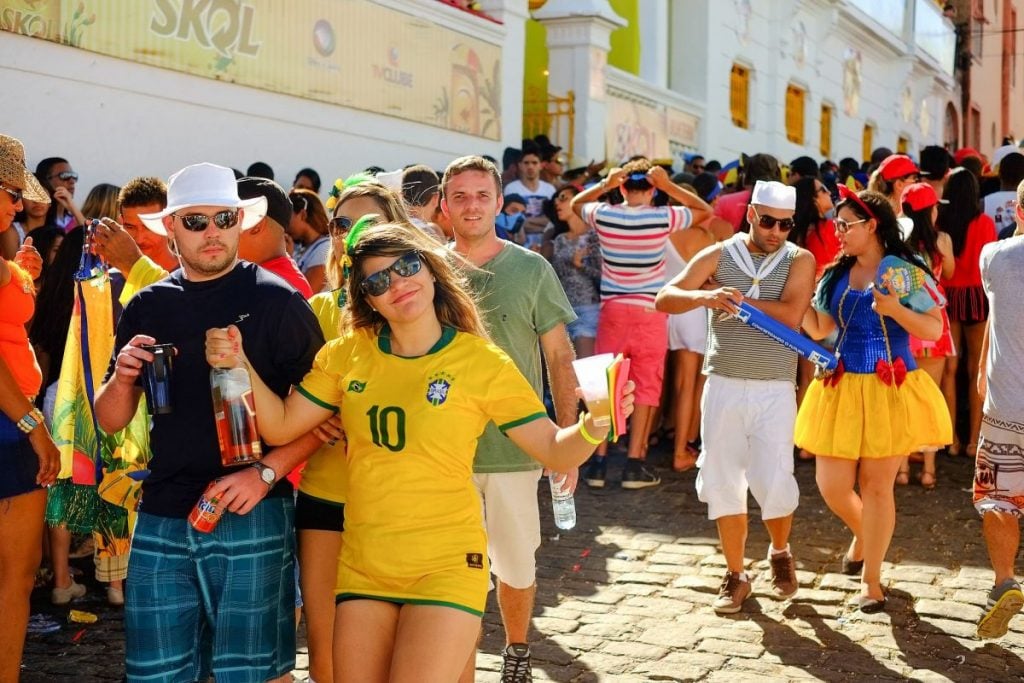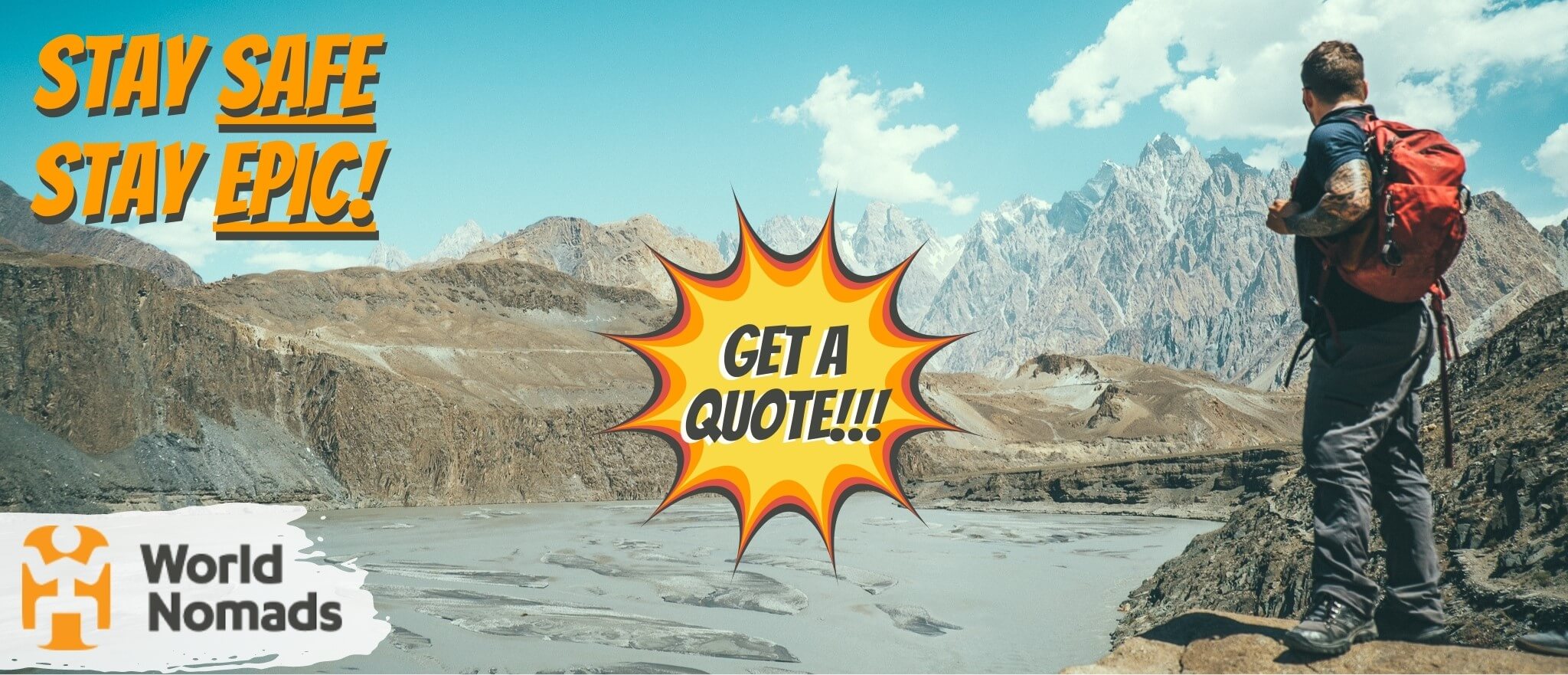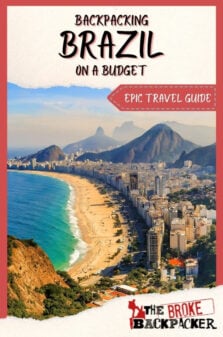Brazil is a country of extremes. The beaches are notorious, the cities are enormous, the nature is glorious – and that’s only scratching the surface.
While travelling in Brazil, you quickly find yourself falling deeply in love with places. Before you know it, you’ll never want to leave.
But the thing about this intense country is it’s a whole continent in itself. No seriously, this massive and incredibly diverse land does some magic and makes your experience so special. The biggest parties are always the most intimate after all.
It has every potential to be full of surprises – good and… not so good. So it pays dividends to get an idea of what you’re getting yourself in for, so you can flow with all the magical marvels.
In this backpacking Brazil travel guide, you’ll find all the information to prepare yourself for this impeccable country: the best places to visit, unique experiences, Brazilian culture, and how to do it all safely.
So pack your bags! Backpacking through Brazil is already shaping up to be a wild ride.
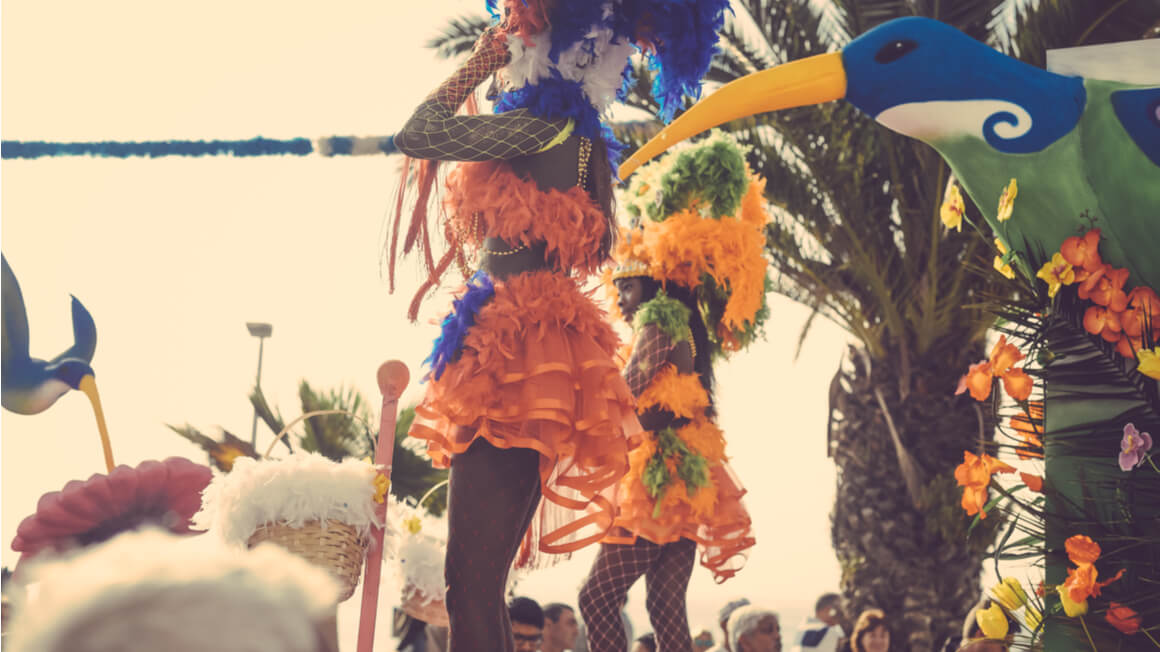
Why Go Backpacking in Brazil?
It’s no secret, Brazil is a huge country – the 5th largest in the world, in fact. The landmass covers almost half of South America. So backpacking South America isn’t really ticked off until you step foot onto the Brazilian side.
It’s hard to describe Brazil without sounding like I’m exaggerating. There is a huge diversity of life that only exists in this country. The landscapes are vast and distinct–there’s something simply magical about the terrain. Backpacking Brazil is one for the books. For starters, of course, you have the Amazon – no doubt you’ve heard of it.
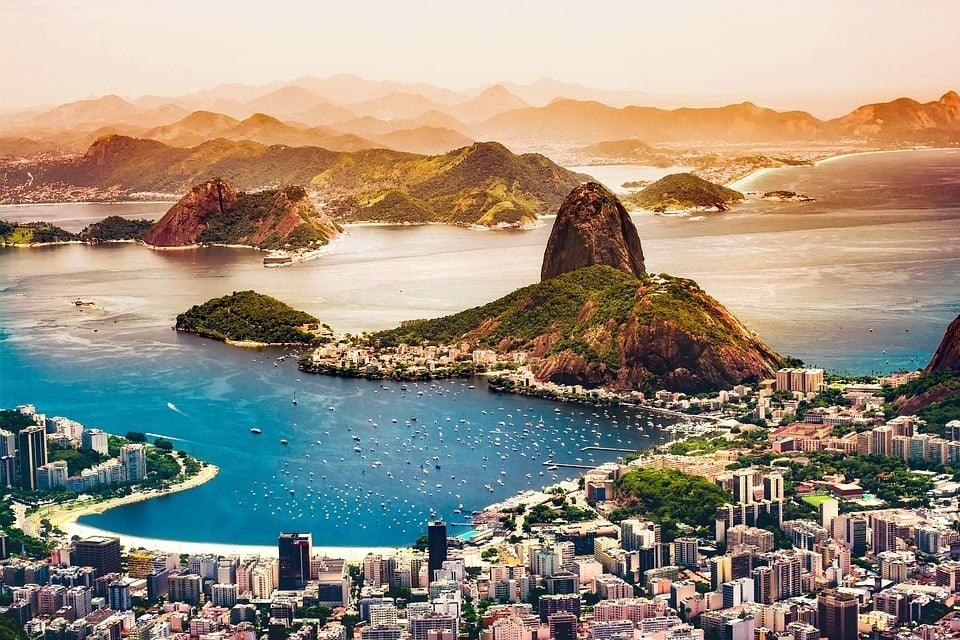
Mountains pierce through the land. Nature greets you every day with extreme life and climate. World-famous metropolises like Rio de Janeiro and São Paulo are only a speck within the cornucopia of possibilities that await you while travelling Brazil.
Nature is king here. Life literally grows on top of life.
The Brazilians have a particular kind of rhythm to their existence. They have an incredible blend of cultures that creates an intense, beautiful, and soulfully electric nation.
Even with a lifetime in this country, you couldn’t get around the whole thing. But with so much on offer, your trip to Brazil will be yours. From mad adrenaline heads to lazy beach bums, you can mold your travel route for Brazil into something unique.

Heading Off-Grid? • Download This Guide as a PDF!
Sign up to The Broke Backpacker’s EXCLUSIVE VIP AREA below and download our top backpacking guides as PDFs – go offline with peace of mind!
- Best Travel Itineraries for Backpacking Brazil
- Best Places to Visit in Brazil
- 10 Top Things to Do in Brazil
- Backpacker Accommodation in Brazil
- Brazil Backpacking Costs
- Best Time to Travel to Brazil
- Staying Safe in Brazil
- How to Get Into Brazil
- How to Get Around Brazil
- Working in Brazil
- Brazilian Culture
- Some Unique Experiences in Brazil
- Final Advice Before Visiting Brazil
Best Travel Itineraries for Backpacking Brazil
These backpacking Brazil itineraries are here only as a guide. They’re going to outline some of Brazil’s main bases and top attractions. I’ve also included some not-so-well-known places.
But this is a massive country where I will actively encourage you to get off the beaten path. That’s where you’re going to find the secluded paradise beaches and the local hideouts – those magical spots that grab your heart and say “please don’t leave me, baby”.
Feel free to take these itineraries, do them frontwards, backwards, inside out, chew them up, and shove them up your arse. They’re just a guide.
Backpacking Brazil 2 Week Itinerary #1: The North
Ah, Northeast Brazil. Nature, humidity, and a whole lot of sand. If you’re a beach person, then you have to check out this area.
Start off this Brazilian backpacking route in Salvador de Bahia, and dive into the colonial history of the city. A quick trip out to Morro de São Paulo will get you started.
After Bahia, if you’re a hiker, head towards Chapada Diamantina and chase some waterfalls. Then circle back to Bahia and head north!
In the state of Pernambuco, check out Recife. Then get out of the city and swing by Pipa or Porto Galinha. Making your way north towards Fortaleza, where you’ll have a chance to stop in Genipabu and Canoa Quebrada along the way as well.
Be careful when you stop in Jericoacoara and Lençóis Maranhenses: you might never want to leave. These are some of the Northeast’s greatest destinations.
Your final stop will be the Amazon Rainforest. Charter a boat in either Manaus or Belém and cruise up the Amazon River in style.
Not enough beaches? Try combining this itinerary with Brazil travel itinerary #2 for the best beaches that Brazil has to offer.
Backpacking Brazil 1 Month Itinerary #2: The Southeast
The southeast is home to some of Brazil’s most famous attractions! This 3-4 week itinerary will give you a taste of the big ones to backpack in Brazil. There’s a lot to see, so some backpackers may want to extend their trip.
This backpacking route through Brazil begins in glorious Rio de Janeiro. Chill in the city beach vibes, and don’t miss a night out in Lapa.
Leaving Rio de Janeiro, you’ll travel along the coast and experience the Mata Atlântica. Experience the magical hidden getaways like Paraty and Ilha Grande.
The next stop is sprawling São Paulo. You have to experience the concrete jungle even just for a little while. The Pinheiros district makes a great party.
Exhausted after São Paulo and Rio de Janeiro? Of course, you are.
Head to Florianopolis in Santa Catarina to find paradise. Stop by Curitiba on the way there to decompress.
If you can drag yourself away from Florianopolis, head back to Curitiba and head to Iguaçu Falls. It’s a long bus ride, but it’s worth it to see this mighty waterfall. You’ll sleep in Foz de Iguacu, and visit the park from there.
Final destination is Mato Grosso do Sul and the Pantanal. Stay in Bonito and take day trips out to the wetlands to get your David Attenborough on.
Backpacking Brazil 6 Week Itinerary #3: History and Culture
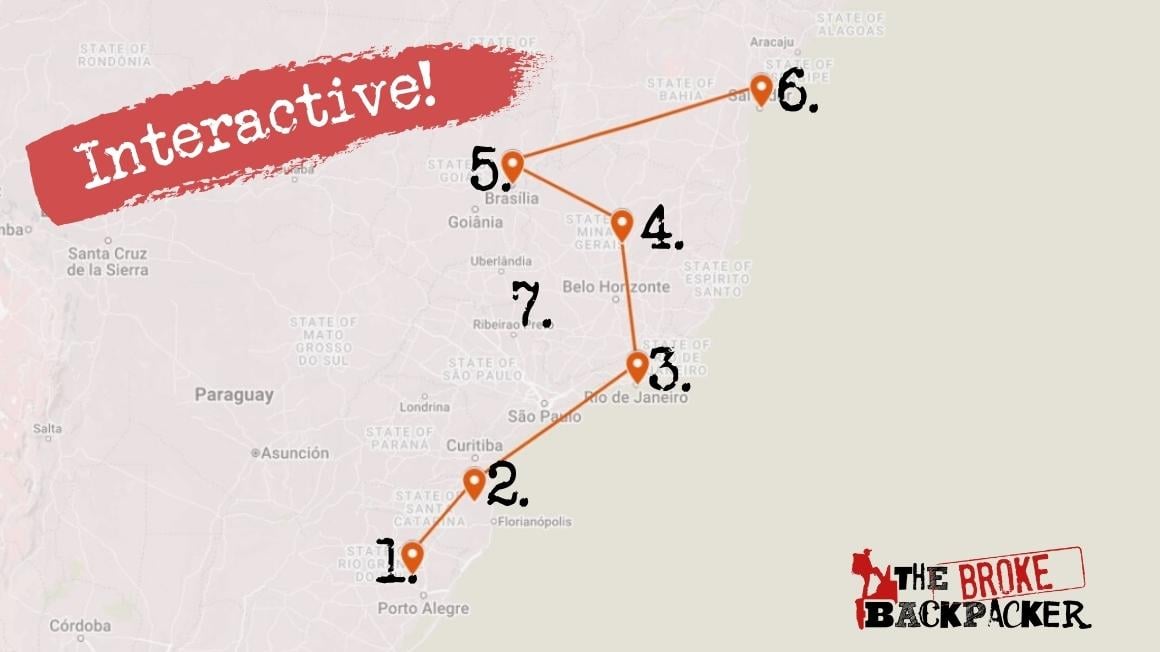
So we’ve seen beaches. We’ve seen cities. Now, on this 6-week Brazil travel itinerary, let’s deep dive into some culture and history.
Starting in Rio Grande do Sul, journey from Porto Alegre to the ruins of São Miguel das Missões. This UNESCO Heritage Site was a Jesuit mission founded for the salvation of the Amerindian locals.
From Rio Grande do Sul to Santa Catarina: the south of Brazil hosts one of the largest concentrations of European immigrants in Brazil. See the German settlement of Blumenau and the Italian Joinville.
After Santa Catarina, continue north to the once capital of imperial, Rio de Janeiro.
Over the passing years, Rio has kept up with whatever was contemporary. For this reason, Rio de Janeiro is a blend of different architectural styles. The city as a whole has been deemed a UNESCO Heritage Site for its harmonious relationship with nature, too.
Next stop is Minas Gerais. Check out the capital, Belo Horizonte, for some of the best food in Brazil. The mining towns of Ouro Preto and Diamantina are super interesting too!
Moving on from Minas Gerais and the past, we enter Brasília and the future. Brasília is Brazil’s new capital and is full of utopian ideals. Take a walk up the “fuselage” and imagine what the founders were thinking when they envisioned Brasília.
Finally, we head northeast and back to the origins of Brazil. Salvador and Olinda are both ground zero for Brazil as we know it today. You can’t miss the colonial architecture and plenty of history.
Backpacking Brazil 3 month Itinerary #4: The Brazil National Parks
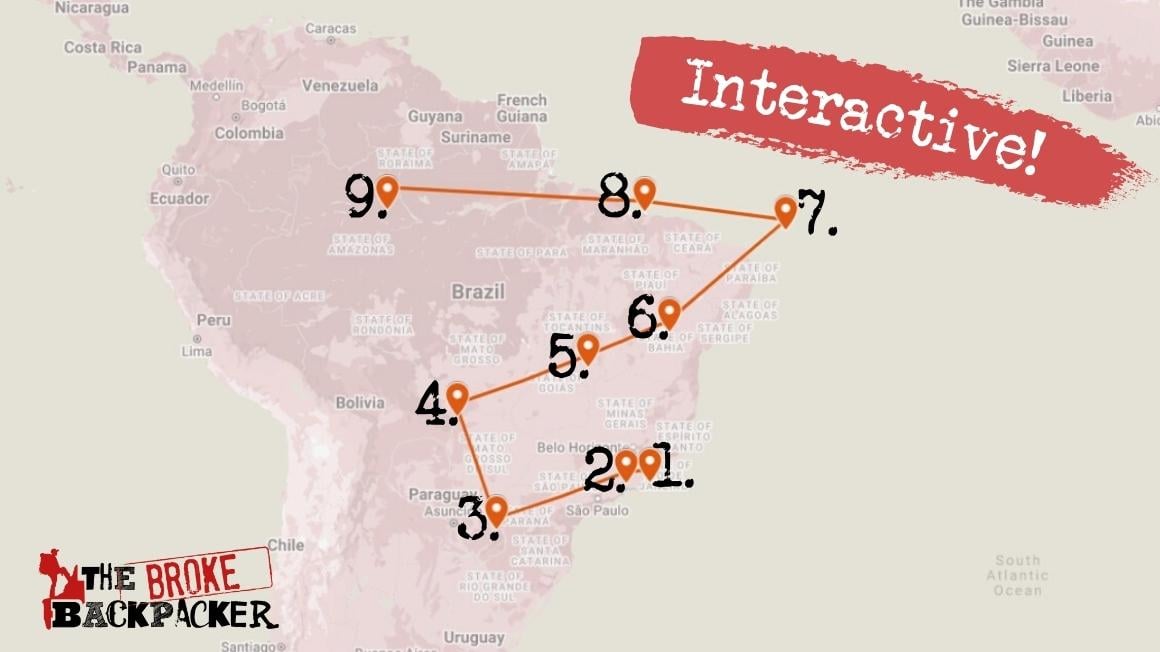
I couldn’t justify a backpacking Brazil itinerary without suggesting the national parks. This is definitely a side that few get to experience. But prepare yourself: this backpacking route is a long one!
Visit Rio de Janeiro and visit the parks of Serra dos Órgãos and Itatiaia. Órgãos offers lots of climbing. Itatiaia is meant for more conventional hiking, through the Mata Atlântica and Rio de Janeiro’s highlands.
Next, catch the long bus to Iguaçu Falls. It’s one of the most majestic sights in the world!
After Iguaçu, head north to the Pantanal for some wildlife and a chance to swim in the crystalline waters of the wetlands. Depart from Mato Grosso do Sul to Campo Grande and the northern Pantanal.
In Campo Grande, you will be able to visit the rugged highlands of Chapada dos Guimarães. Check out the awesome falls, and hike up to the top of São Jerônimo Hill for breathtaking views.
From Mato Grosso, head east towards the state of Goiás and Chapada dos Veadeiros. Swim in the rock pools and marvel at surreal geology.
Keep heading east from Goiás and arrive at Chapada Diamantina in Bahia. Trek around the canyons and discover secret grottos.
Leave Chapada Diamantina, and catch a flight in Salvador to the remote Fernando de Noronha. This is heaven! Trek around the islands and find beautiful beaches all to yourself.
Back to the mainland, bus it to the surreal Lençóis Maranhenses. Wander among the bleached dunes and take a dip in the cerulean pools during the rainy season.
Finally, the Amazon Rainforest, of course! Along the way, you’ll visit the Parque Nacional do Jaú, which offers classic amazonian experiences.
Best Places to Visit in Brazil
Your Brazil backpacking route is going to be an unforgettable ride – no matter which direction you head in! If I listed all the places I think you should see, we’re going to be here for a very… very long time.
So here’s the down-low on some of the top places to visit in Brazil. It wouldn’t be a legit backpacking Brazil travel guide without them.
Backpacking Rio de Janeiro
A cidade maravilhosa (the wonderful city) is a blessed place. Its actual name literally means “River of January”: Rio de Janeiro.
Upon first sight, you’ll feel as if that giant Christ statue on the hill was put there by God himself. There are so many things to do in Rio!
Rio is the capital of the state of the same name and is the most likely part of your travels. There are many interesting places to stay in Rio, and each neighbourhood has a different vibe.
The CBD (Centro) itself is fairly uninteresting, except for a few museums. The nearby districts of Santa Teresa and Lapa are more noteworthy. Santa Teresa is a lovely artist’s neighbourhood, and Lapa is where the party is.
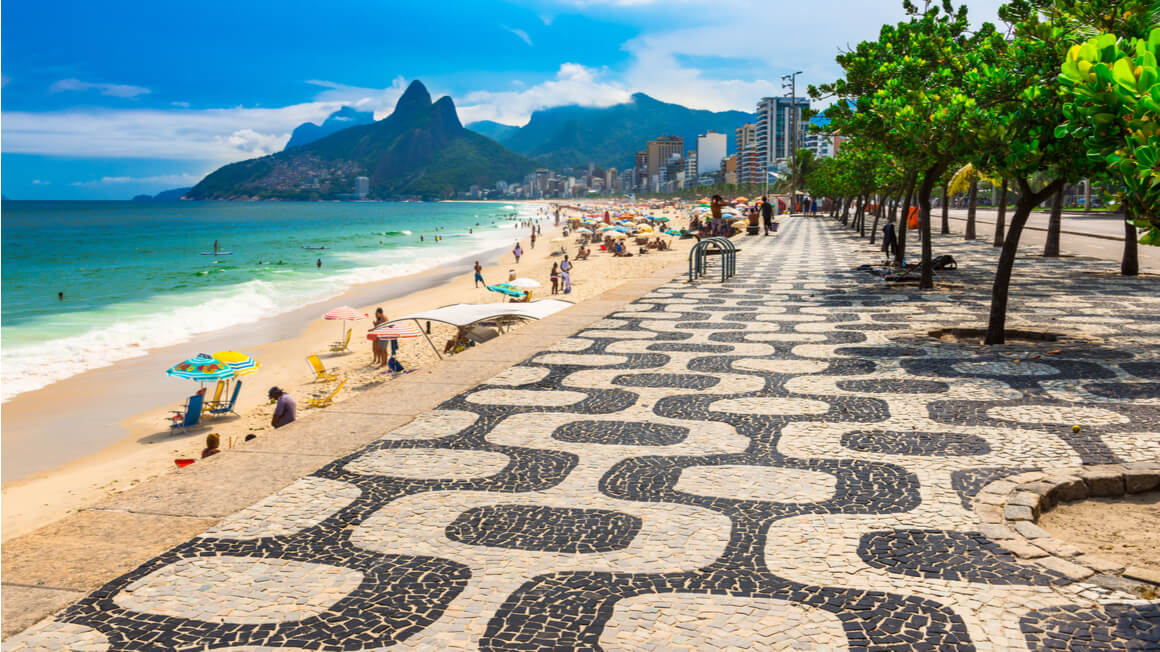
The real action is in the south of Rio, where the beaches are located. The best hostels in Rio de Janeiro are here too. Flamengo, Botafogo, Leme, Copacabana beach, Ipanema, and Leblon run back to back to one another and form a substantial strip of sand.
My personal favourite is Ipanema, which is the best beach by far. Be sure to hang around Posto Nove when you’re there.
Rio is infamous for its favelas or “shanty towns”. Some are pacified, and some are actively dangerous.
You can visit a favela, like Rocinha or Vidigal, but don’t go wandering into neighbourhoods you don’t know. Power among gangs is constantly shifting. A favela may be safe one month and a warzone the next.
Ilha Grande, Paraty, and the national parks are iconic. Paraty is an old colonial town that specializes in the distilling of cachaça (Brazilian rum). Ilha Grande is just beautiful beaches galore.
Backpacking São Paulo
If there’s one word to describe São Paulo it’s really f*ucking massive. Wait… that’s 3 words.
Nearly 20 million people live in this metropolitan giant. You’re in an ocean of skyscrapers, business centres, electric nightlife, and people just trying to make a life for themselves.
The best places to stay in São Paulo are the central and western districts. This is where you’re going to find the most exciting action as a visitor.
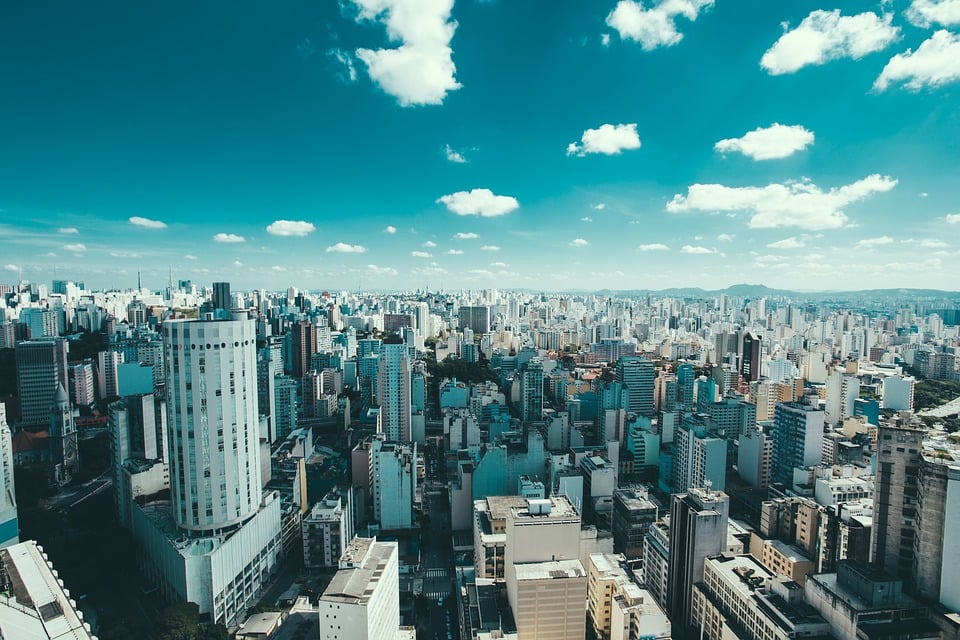
There is a big class divide between the very rich and the very poor. It can be a very intimidating place to visit, especially if you’re not a city person. But if you find your niche, there is a raucous social scene that awaits you.
People are very keen to express themselves in São Paulo. That means incredible art, soulful music, and lively nightlife.
Downtown Sampa is where you’ll find the baroque and neoclassical architecture. Check out Catedral da Sé, Theatro Municipal, and the Praça da República for examples of Sampa’s stylistic diversity.
Western District is a much newer, and more dynamic area of the city. You’ll find lots of São Paulo’s best hostels here.
Jardim Paulista is the fancy pants neighbourhood. Walk up Avenida Paulista, one of São Paulo’s most important throughways. Pay a visit to Sampa’s own Manhattan as well, which is conversely named Brooklin Novo.
A night in Vila Madalena and/or Vila Olímpia is an adventure, for sure: these neighbourhoods are magnets for the young, the successful, and the passionate. Hell, anyone with a beating heart goes out for a good time. Expect more pubs in the former, and clubs in the latter.
If it’s a choice between São Paulo or Rio de Janeiro, we would pick Sao Paulo, hands down!
Backpacking Paraná
So if Rio de Janeiro and São Paulo sound a bit bloody intense – I don’t blame you. Enter: Curitiba, the capital of Paraná.
This laid-back, modern major Brazilian city is a fine example of places we could be seeing more of in the future. It’s recognised as one of the most innovative cities in the world and has one of the highest standards of living in Brazil.
The city of Curitiba is a stark contrast to the rest of Brazil: composed, generally safe, and it can even get chilly – hey, maybe even snowy!
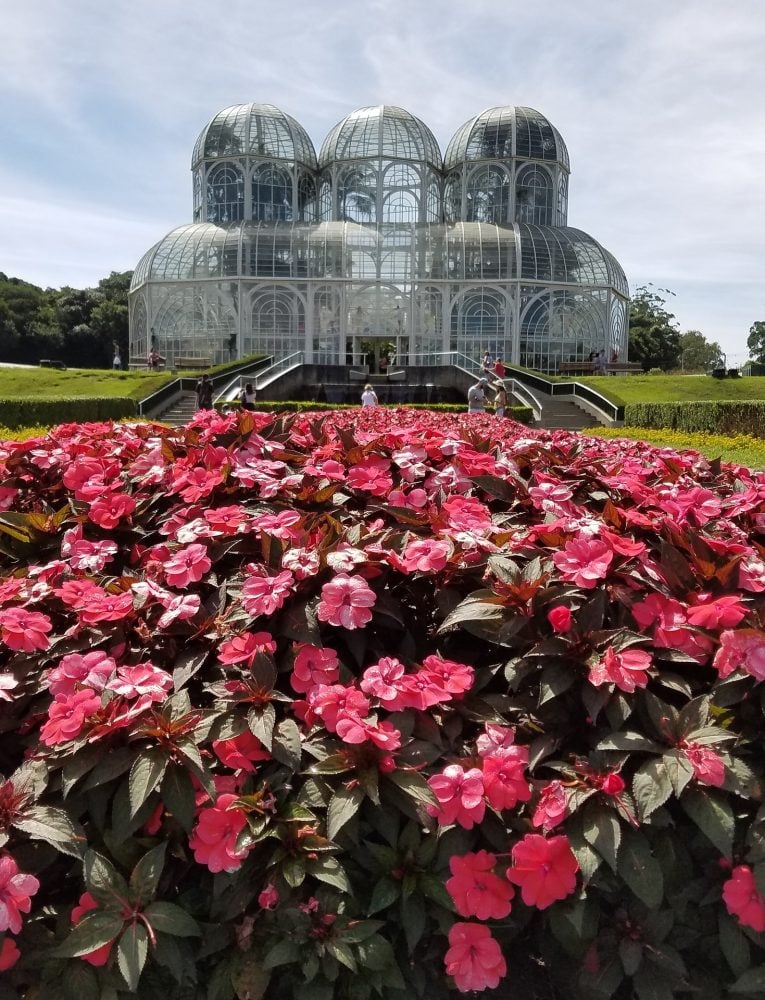
Curitiba is abundant with lush public spaces. The blossoming Jardim Botânico is Curitiba’s pride and joy and resembles most gardens of French royalty. Barigüi Park, Barreirinha Park, and the German Wood are the places to wind down and watch the world go by.
Although lovely, you only need a few days in Curitiba. The rest of Paraná has a similar vibe and won’t let you down if you decide to explore the beaches or more inland here.
Once you travel this far south, you will notice that things begin to look increasingly European. Southern Brazil is where the vast majority of Europeans settled – German and Italian being dominant heritages. As well as the aesthetics of the big cities, notice how the culture and features of the people change.
Backpacking Santa Catarina
Santa Catarina is one of those places that’s definitive of Brazil. You could stop anywhere on the coast of Santa Catarina and find incredible beach hideouts. The state is the definition of ‘natural beauty’.
People talk about Florianópolis like it’s some made-up universe. When, in reality, it’s even better. As soon as you drive over the bridge onto the island you’re already changing your plans to figure out how you can stay as long as possible.
Life in Floripa is very easy: pristine beaches, a relaxed pace of life, and that holiday feel 24/7. The best places to stay in Floripa are… everywhere. Though, there are certain areas that cater to different interests.
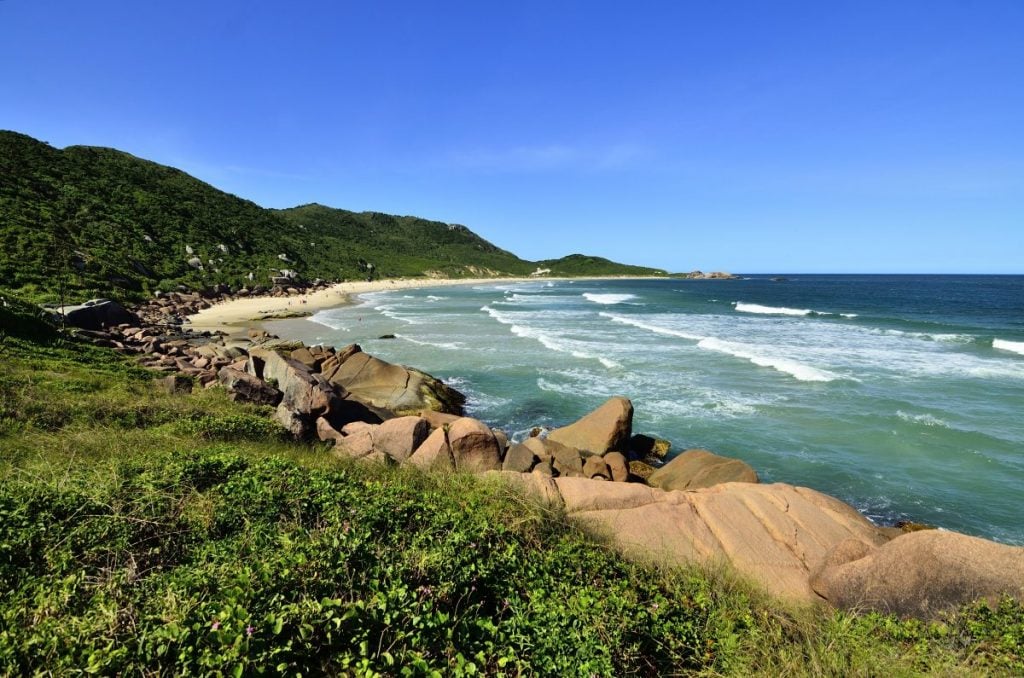
Central Florianopolis is nothing more than a little central hub. Take a bus here and get yourself out.
Northern Floripa is more resort-y and houses the island’s most popular nightclubs. South, towards Barra da Lagoa, things become less upscale.
Barra is more laid back and where you’ll find the most backpacker hostels in Floripa. Nearby Praia Mole is a popular surfer’s beach.
The far south of Floripa is totally undeveloped. If you enjoy a hike, you can find beaches that are literally abandoned because they require a trek to get to. Lagoinha do Leste is a stunning example of this phenomenon of untouched, hidden shores.
Outside of Florianópolis, check out the party city of Balneário Camboriú. World-famous Warung Beach Club and Green Valley are located just outside.
Joinville is the largest city in the region, and is predominantly Italian. Blumenau is a city of German heritage that hosts the world’s second-largest Oktoberfest.
Backpacking Bahia
Ask Brazilians where the “real” Brazil is, and they’ll most likely say “Salvador de Bahia.” Salvador is the capital of the state of Bahia and the former capital of the original Portuguese colony. The city is a treasure, filled with remnants from the days of colonialism and stories of Brazilian independence.
First: the touristy stuff. The historical district, called the Pelourinho is a bit of a tourist trap but still worth visiting. Be sure to see the important religious sites as well – the Cathedral Basilica of Salvador, Nossa Senhora do Rosário dos Pretos, and Nosso Senhor do Bonfim.
Don’t miss the sunset at the Baía de Todos Santos. Take to the promenade or ride the Elevador Lacerda for the best view.
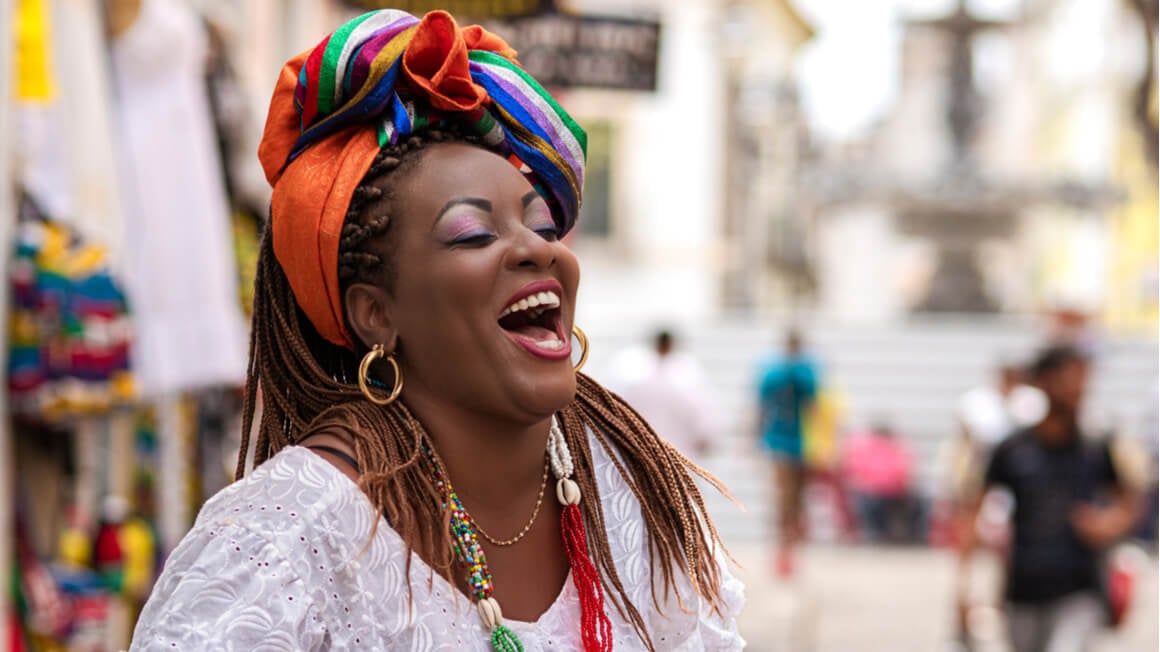
Salvador hosts the world’s largest Carnaval celebration! Every Carnaval is different, but Salvador’s Carnaval tops even Rio’s and Recife’s. (Am I biased? Maybe.)
If you’re planning on going to this event (and you definitely should) the best hostels in Salvador book up fast. So plan ahead!
Bahian Carnaval is arranged in a giant parade. Floats and trucks troll the streets all night long surrounded a sea of dancing.
Each truck forms a bloco, which is separated from the others by a rope that encircles the crowd. The effect is a giant, moving dance floor, forming the world’s largest street party!
Outside of Salvador, you’ll find plenty of natural beauty. Morro de São Paulo and Itacaré are both wonderful beaches. Locals and tourists alike flock to these to relax and escape madness.
Also worth seeing is Chapada Diamantina to the east of Salvador. This national park is one of Brazil’s outdoor jewels and is worth visiting for a couple of days. Check out the trekking section for more on that!
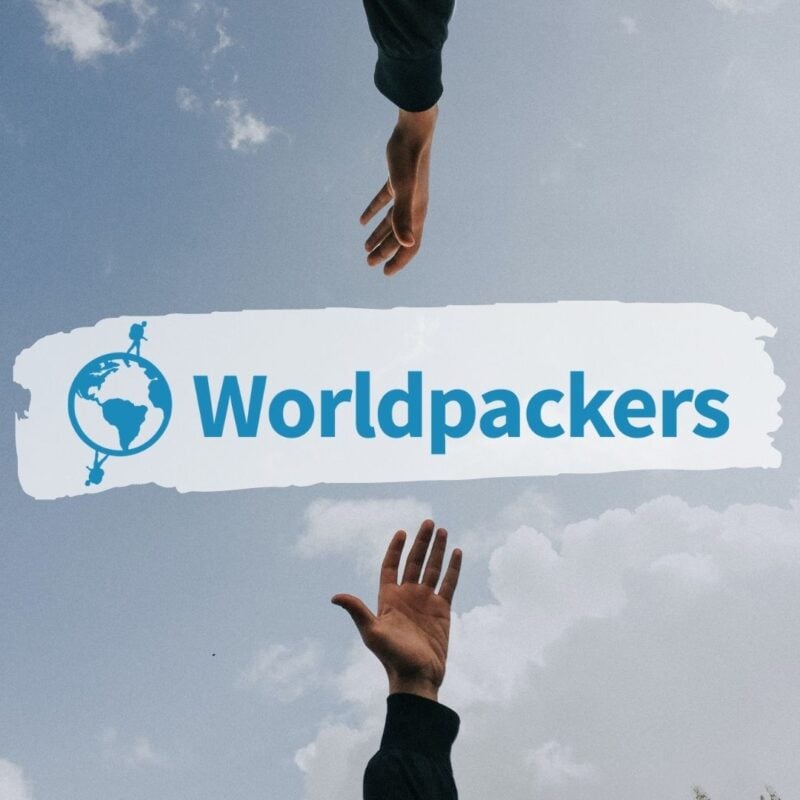
Worldpackers connects travellers with hostels, schools, NGO’s and many more. Get free accommodation in exchange for volunteering a few hours a day. You won’t just save serious $$$, you’ll experience a different culture, cool projects, meet new people and integrate into the community in a different way.
Broke Backpacker readers get a $10 discount when you sign up. Use the discount code BROKEBACKPACKER. Plus, get 3 free months on your membership during their summer promo!
Travel well with WorldpackersBackpacking North East Brazil
You’re in Northeastern Brazil now. Here, the climate and culture are distinctly different from the south of Brazil. Like Bahia, the ethnicity is predominantly African, the sun is almost always shining, and the beaches are abundant.
I’d love to speak about each of the northeastern states individually, but for the sake of time, they’re combined into one section. Most of these states will offer similar experiences. I’ll point out certain exceptions along the way.
Pernambuco and its capital Recife are the first stops. It’s one of the most historically significant cities in Brazil. Plus there are some incredible hostels in Recife!
The Old City and nearby Olinda are wonderful examples of Dutch and Portuguese Colonialism. Streetwalkers will notice the many canals that weave throughout the city as well.
The locals have dubbed their city Veneza Brasileira (Brazilian Venice) because of these waterways. The city beaches of Recife are also fantastic.
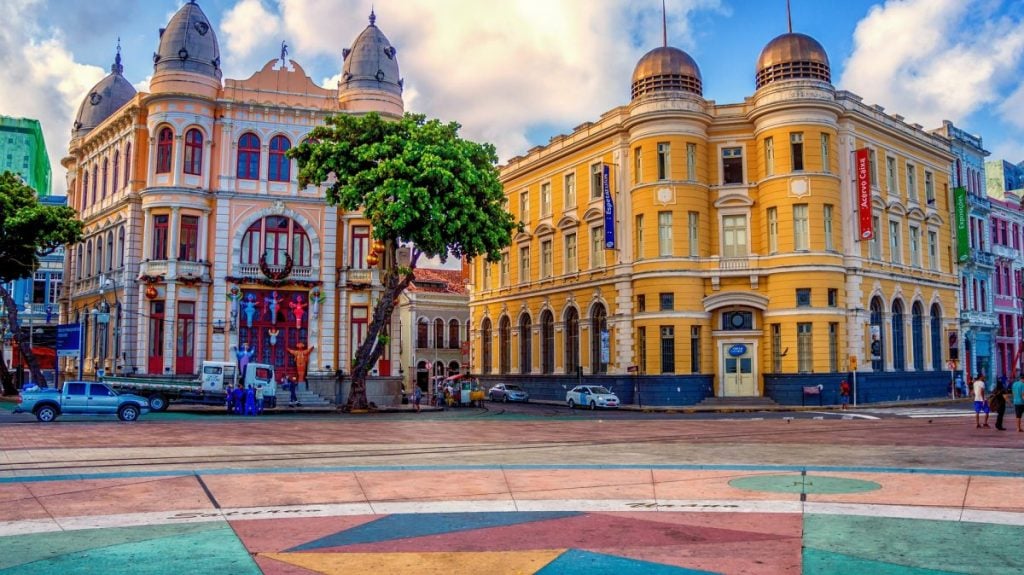
Outside of Recife, there are lots of beach towns to check out. Porto Galinhas, Itamaracá, and Cabo de Santo Agostinho are wonderful examples.
Next up is Natal and the state of Rio Grande do Norte. Natal is a more laid-back city than Recife.
The economy of Natal developed more slowly than the rest of the north east. What it lacks in vibrancy and historical significance, it makes up for with a higher quality of life and public safety.
The beaches surrounding Natal are some of the best in the north east. Pipa and Genipabu are loved dearly by Brazilians, for (what else?) the perfect sand and water.
When you’re ready, create your own adventure in the other states: Sergipe, Alagoas, and Paraíba.
Backpacking Jericoacoara
The beach. The myth. The legend. Jericoacoara.
For many unknown reasons, Jericoacoara is the promised land for backpackers and hippies. I’ve known many people backpacking Brazil who have travelled north based only on a rumour. Upon arriving and discovering that this El Dorado does indeed exist, they quickly disappear into the depths of its pleasures.
The fame of Jericoacoara isn’t undeserved though. Time is non-existent. The streets are too – just white sand and stones.
People lounge in hammocks that rise picturesquely out of the shallows. Ah, Paradise.
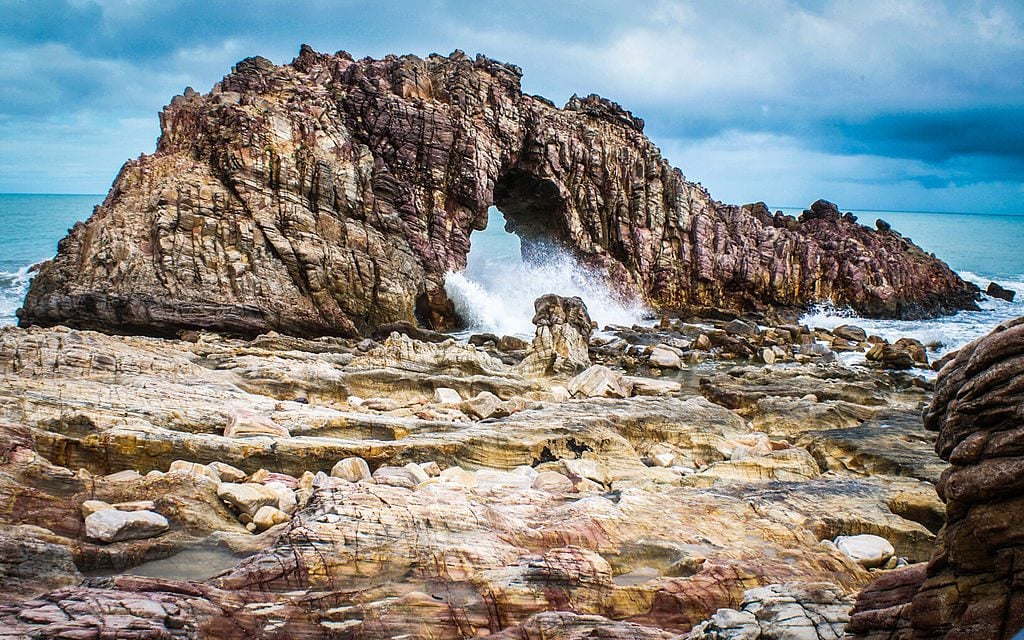
Photo: Fjuniordf (WikiCommons)
Kitesurfing is famous in Jericoacoara. If you’re not fancying that, there’s a whole lot of bumming around to do. You can walk the nearby National Park and the Pedra Furada – a half-day is sufficient for both.
Those wanting to visit Jericoacoara will most likely pass through Fortaleza, the capital of Ceará, the last big city in Northeastern Brazil. Fortaleza is not quite as clean as Natal, and not quite as rich as Recife. It’s a bit behind in many ways, but it still has its charm.
The performing arts – specifically comedy, and a local dance style called forro – are strong in Fortaleza. Nightlife is also booming, but do it safely.
Backpacking Iguaçu Falls
Iguaçu Falls is not to be missed! It is truly one of the most awe-inspiring sights in the world.
Iguaçu Falls is composed of nearly 275 falls that range between 200 and 270 ft in height. It is the world’s widest waterfall, and probably the most engrossing.
There are walkways that put you literally in the middle of the canyons where you’ll be surrounded on three sides by waterfalls. You will get wet, and you will love it.
Iguaçu is actually split between Brazil and Argentina: it’s one of the best places to cross the border to go and backpack Argentina too. So go ahead and see if from both sides!
The Brazilian side skims the edge of the falls and gives a better panoramic view. The Argentinian side traverses the top of the falls and gives a more up-close and personal experience. From the Argentine side, you get to stare down into A Garganta do Diabo (The Devil’s Throat), which is pretty fucking cool.
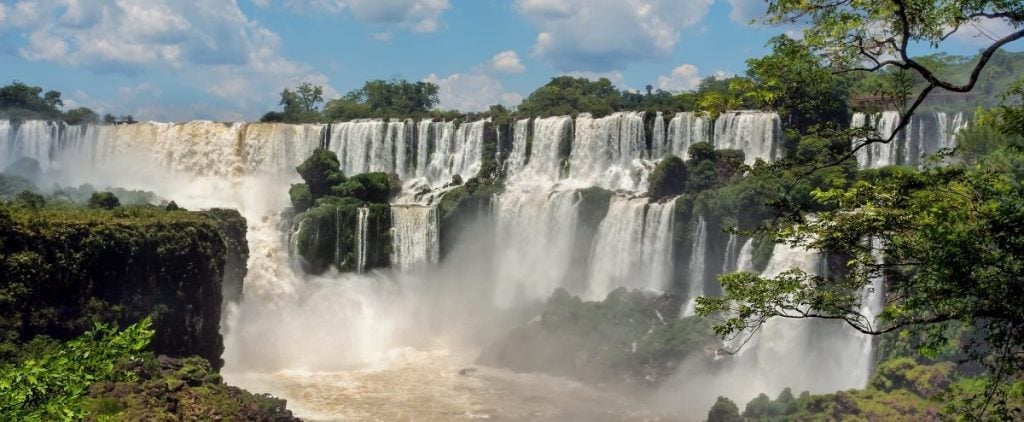
There’s a hot debate about which side is better. But we’re backpacking Brazil here… So it’s definitely Brazil, obviously.
Accommodation wise, you’ll be staying in the sleepy town of Foz do Iguacu. The town pretty much serves only as a gateway for the falls. Find the right hostel though, and your stay could be a lot of fun.
Backpacking Pantanal
The Amazon isn’t the only place where you can spot wildlife in Brazil: in the south of Brazil, there is the Pantanal wetlands. The Pantanal is actually considered the biggest freshwater ecosystem in the world.
The chances of seeing animals are huge here; reportedly even better than in the Amazon actually. Local wildlife include capybaras, giant anteaters, rheas, jaguars, and lots more!
Given its size, there are several ways to access the Pantanal. The two most popular entryways are via Cuiabá of Mato Grosso, and Campo Grande/Bonito in the southern state Mato Grosso do Sul. Those coming from Iguaçu Falls will probably find Campo Grande more convenient.
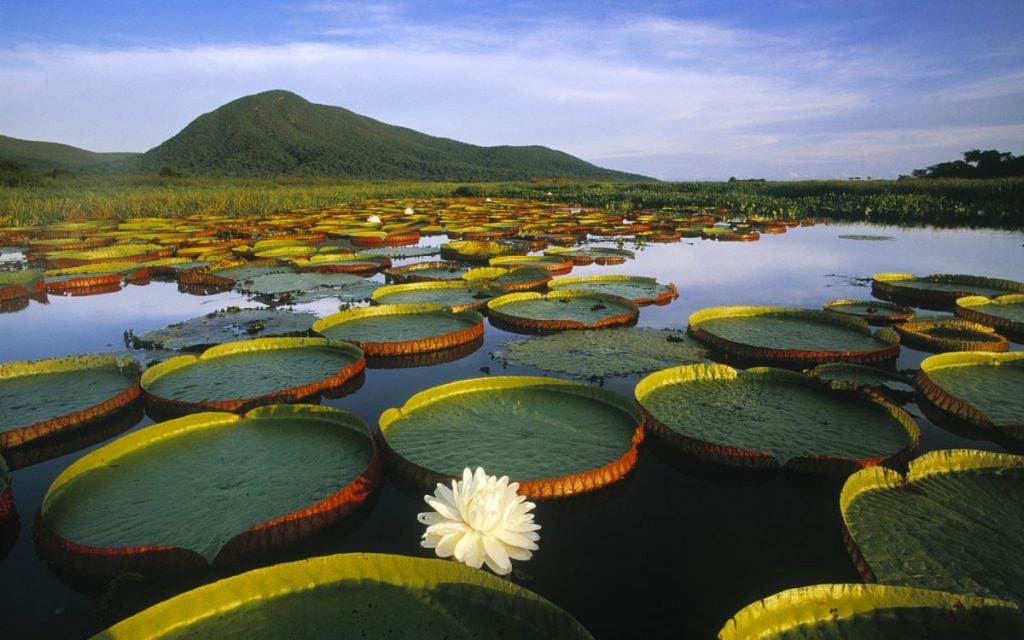
Photo: miquitos (Flickr)
Campo Grande is a large, modern city that is well-known for its cattle industry. Visit a local churrascaria for some intensely delicious barbecued meats.
Though Campo Grande gives access to the Pantanal, the real jewel is Bonito. Bonito is an eco-tourist destination that offers way more activities. Snorkel in the crystal clear Rio da Prata or visit one of the local caves to have your mind blown by the blue views.
Cuiabá is a small but vibrant city and very close to northern Pantanal. There’s actually a road, the Transpantaneira Highway, that runs directly into the Pantanal from the city. Motorists will have lots of opportunities to see breeding and feeding grounds on the side of the road.
Cuiabá is also a very convenient base to explore the nearby national park, Chapada dos Veadeiros. Veadeiros is a stunning area known for its ecological diversity, unique geology and stunning landscape. Rent a car in Cuiabá and visit both the park and the Transpantaneira in a few days.
Backpacking The Amazon
The Amazon Rainforest is tied with beaches as the most recognizable feature of Brazil. The Amazon is the largest rainforest in the world.
There are reportedly over 400 billion individual trees there. That is more than fifty times the world’s human population.
Navigating such a large area can be daunting but your main gateway is going to be Manaus. Belém is sometimes considered a jumping-off point but it’s far east and closer to the coast. A boat trip from Belém to Manaus may be worthwhile to some, as trips are quite lazy and chill.
From Manaus, you can charter a boat to take you up the Amazon River. While cruising the river, keep an eye out for all of those critters you grew up reading about – the pink river dolphin, three-toed sloth, and piranhas! The nearest national park is called Jaú, and it’s located very close to Manaus.
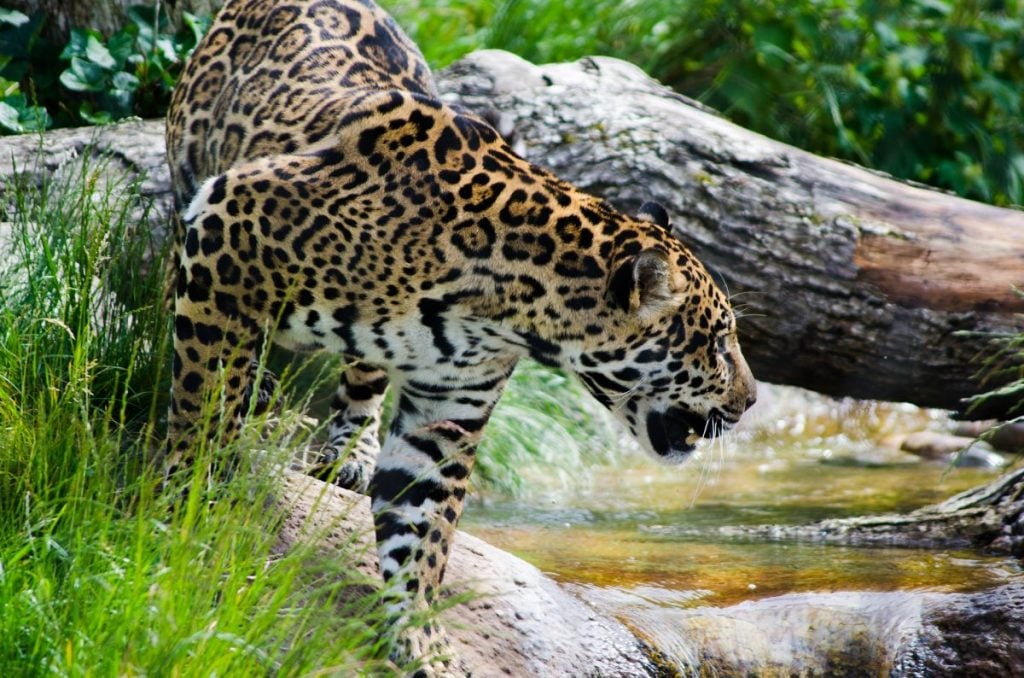
You might want to try Ayahuasca while visiting the Amazon. This powerful hallucinogenic drug has long been used to purge users of toxic mental deficiencies. I strongly recommend you find a reputable Sharman or join a healing lodge to appreciate this sacred ceremony.
Adventurous folk can ride the rivers all the way to the borders of Colombia or Peru. Heading towards the former on the Rio Negro, backpackers will have the chance to stop and see Pico da Neblina. Neblina is the highest mountain in Brazil and has a very distinct profile.
Backpacking Minas Gerais
Some people swear by Minas Gerais and its capital, Belo Horizonte, as the best city in Brazil though. It has a stunning example of nightlife in Brazil.
Belo Horizonte is the “bar capital of Brazil”. Thousands – twelve thousand, if you believe the local reports – of bars line the city streets, and every night they fill up. Locals come to shoot the shit and touch glasses.
The scene is a striking contrast to the hedonistic revelry found in Rio and Sampa. Drinking aside, Belo Horizonte is also where you’ll find the most farms and, therefore, the best food in Brazil.
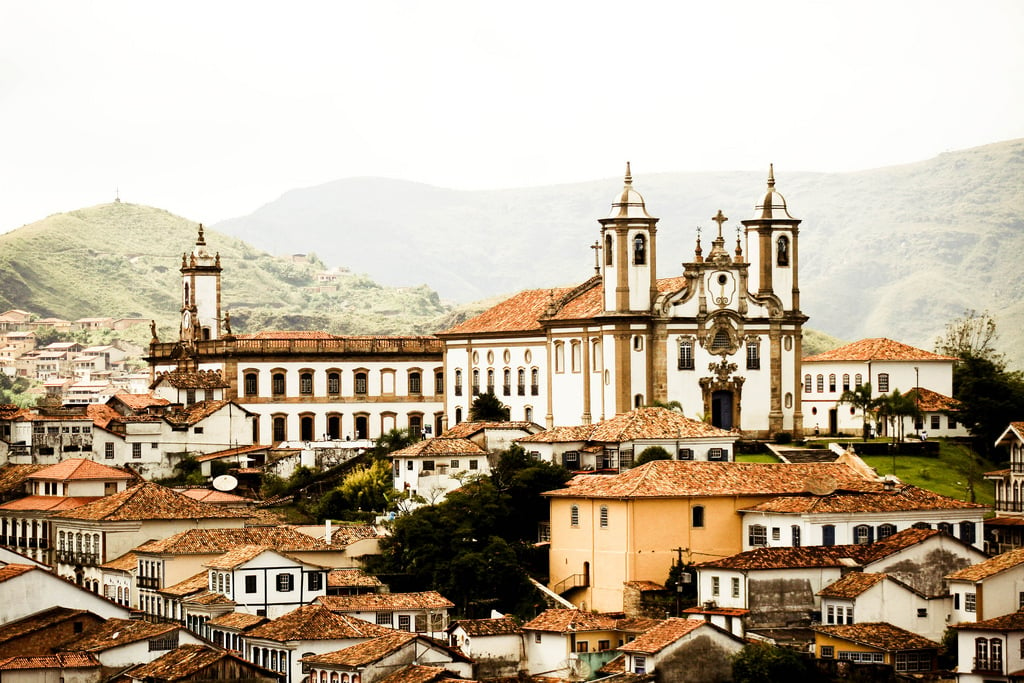
Photo: Rodrigo Denúbila (Flickr)
Minas Gerais is also famous for its colonial towns. Most are remnants from the days when the state was a center for the mining industry. Painstakingly preserved, these villages are a lovely journey back in time.
Ouro Preto is probably the most famous of these villages. Tiradentes and Diamantina are also worthy destinations.
Off the Beaten Path Travel in Brazil
In a country that’s bigger than Europe, you can imagine there are a plethora of places off the tourist trail. This is one of my favourite things about Brazil: you have every opportunity to make a route that no one else has made before. With a little patience, you can get pretty much everywhere.
And you should! Because off the beaten path, nature comes incredibly intimidating, culture is shocking, and food tastes delicious.
The federal capital of Brazil is Brasília. It’s a bit out of the way but if you’re interested in architecture and/or Brazilian politics then it’s a must-see. If you’re not into those things though, you can happily skip over Brasília.
Most backpackers don’t even consider the most Southern Brazil, Rio Grande do Sul. It’s a shame: Porto Alegre is one of my favourite cities in Brazil.
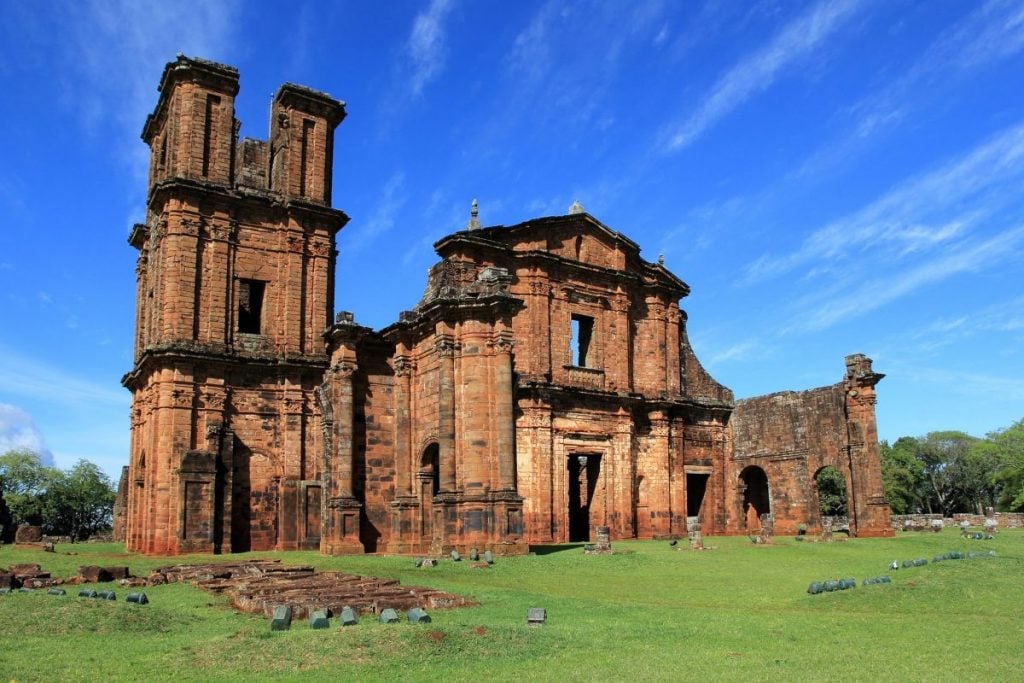
Photo: Halley Pacheco de Oliveira (WikiCommons)
It’s a quiet place with a high standard of living but there aren’t many attractions. So why visit Rio Grande do Sul? Because the people are downright beautiful – that’s why.
Aparados da Serra is a cool canyonland to the north of Porto Alegre with lots of hiking. To the west, São Miguel das Missões is one of Brazil’s most important heritage sites.
The state of Maranhão gets little attention compared to it’s southeastern neighbors. But this state has one BIG thing going for it: Lençóis Maranhenses National Park. This surreal park mostly consists of bleach-white sand dunes.
During the short rainy season (May-September) the dunes fill with rainwater and small, landlocked lagoons form. It’s a surreal experience; elegant sheets of sand (lencois means “bed sheets” in Portuguese) are painted with the cerulean colors of the lagoons. The scene definitely resembles a painter’s easel.
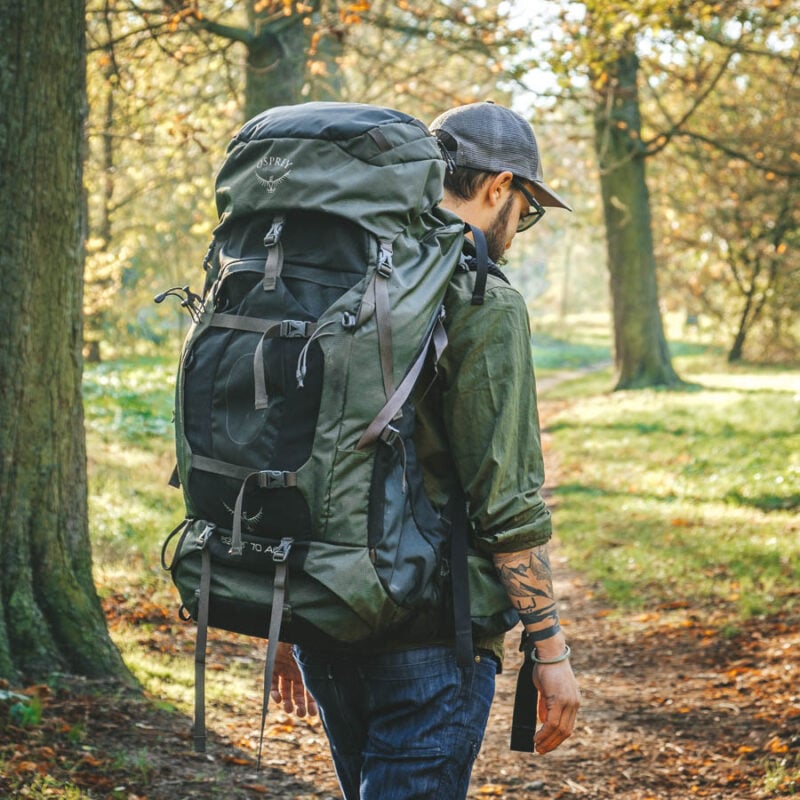
We’ve tested countless backpacks over the years, but there’s one that still stands the test of time: the backpacker-approved Osprey Aether.
Want more deetz on why it’s so damn perfect? Then read our comprehensive review for the inside scoop!
View on Osprey View on REI10 Top Things to Do in Brazil
1. Party at Carnaval, of course!
Be a part of the biggest party on Earth! Nearly the entire country shuts down for a week while everyone gets their last kicks in before Lent at Brazil’s biggest festival.
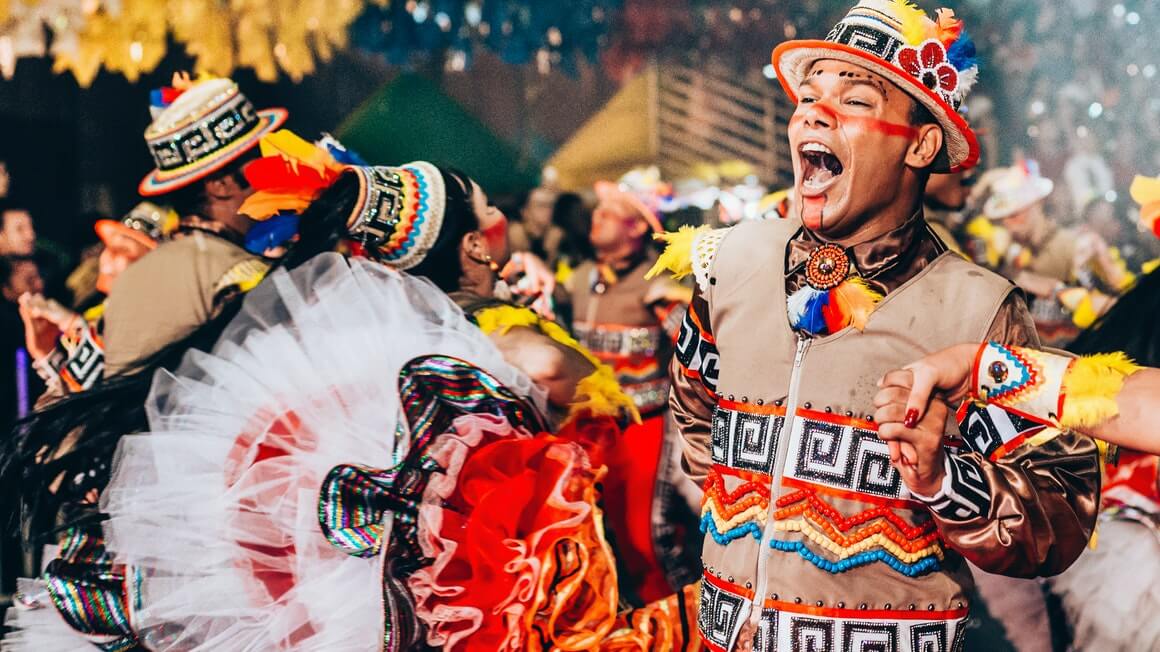
2. Learn Portuguese
Portuguese is a gorgeous language. Stick around the country for a while and learn a bit of it. You’ll be one of the locals in no time.
3. Check out the National Parks
Brazil’s beaches get all of the attention, but its landscape is just as spectacular! Visit one of the national parks and see a more rugged side of the country.
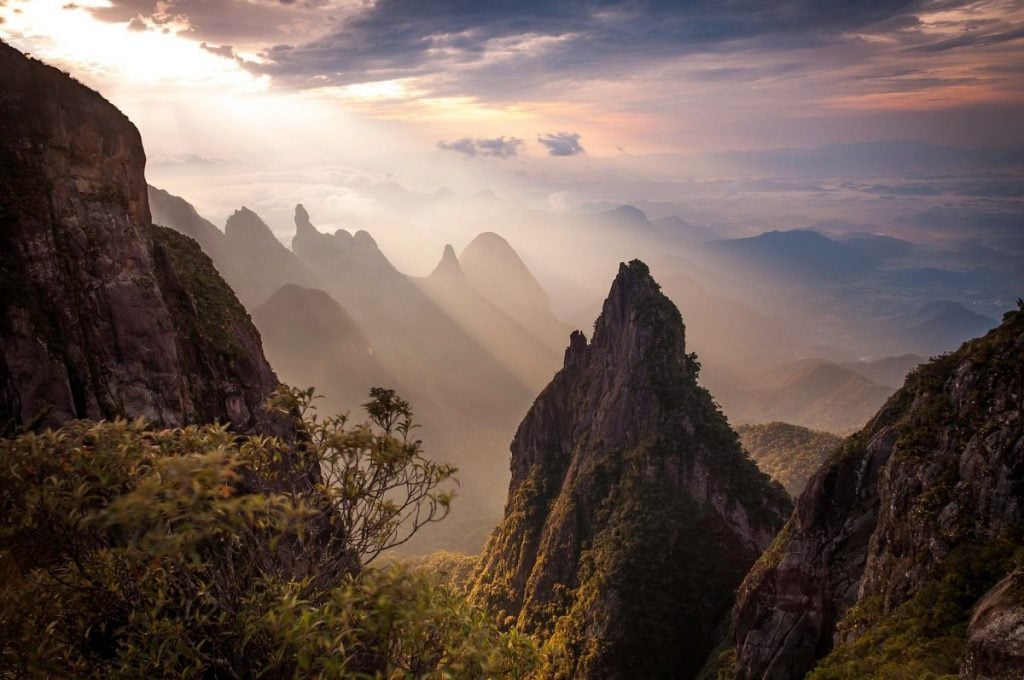
Photo: Carlos Perez Couto (WikiCommons)
4. Fall in Love
Brazilian people are some of the most beautiful in the world! So if you’re ready for your story of love and sex on the road to unravel, this is definitely a place you won’t ever forget. You’d have to be an amoeba to not feel a little flushed around these intoxicating people.
5. Play on the Beach
Brazil has more than 4,600 miles of coastline! Go surfing, swimming, play volleyball, and smoke a nice joint while soaking in that vitamin D.
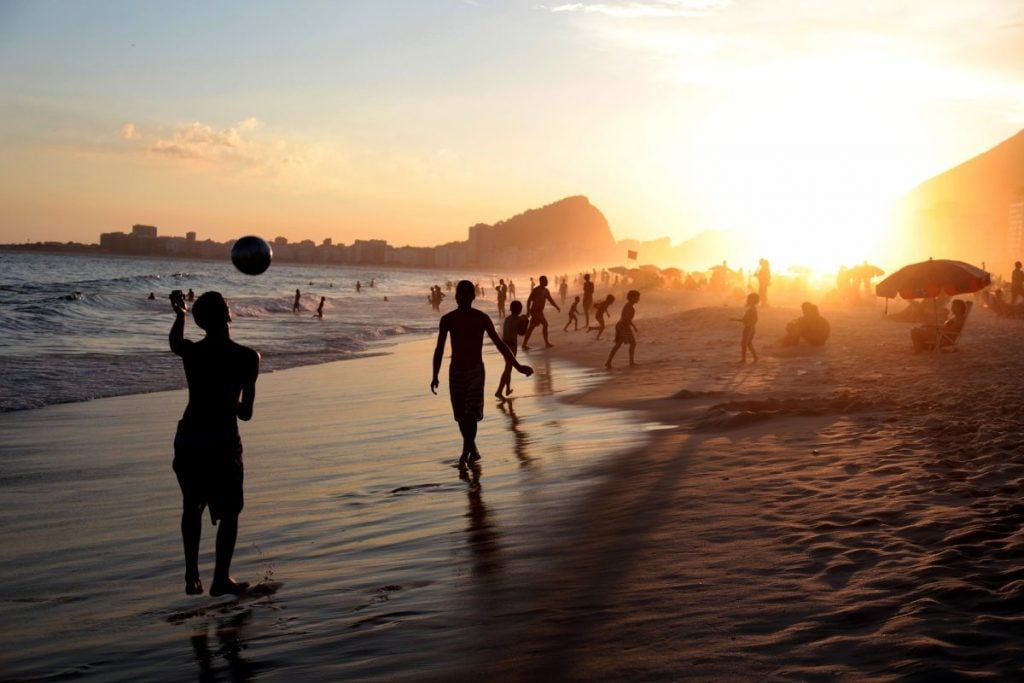
6. Get stuck somewhere
You know when you travel somewhere and all of a sudden you get that intense sense of belonging? Like you just never want to leave? Yeah… that’s pretty much Brazil in a nutshell.
So plan accordingly. Leave some time for those places that just steal your heart.
7. Watch a football match
In case you weren’t already aware, Brazil is football crazy! Sometimes a little too crazy, but that is what we want, isn’t it?
You don’t even have to necessarily go to a football game either. You’re probably going to see amateurs around and about; they’ll play basically anywhere. They’re very used to passersby stopping to catch some of the game too. So when you’re not in a hurry (who’s in a hurry?) stop to see how Brazilians become the word champions time and again.

Photo: Marcelo Camargo/Agência Brasil (WikiCommons)
8. Visit the Amazon or Pantanal
No doubt, you know that Brazil is home to the world’s largest rainforest. You’ve been hearing stories about this mystical place since you were a kid. Finally, you can experience it for yourself.
As well as the Amazon, Brazil also houses the largest wetland in the world, Pantanal! Between these, you can imagine all the incredible and unique wildlife that thrives.
9. Be humbled by Iguacu Falls
There are few sites in the world that are as mighty as Iguaçu Falls! Feel the power as tons of water spill over the edge and into the void.
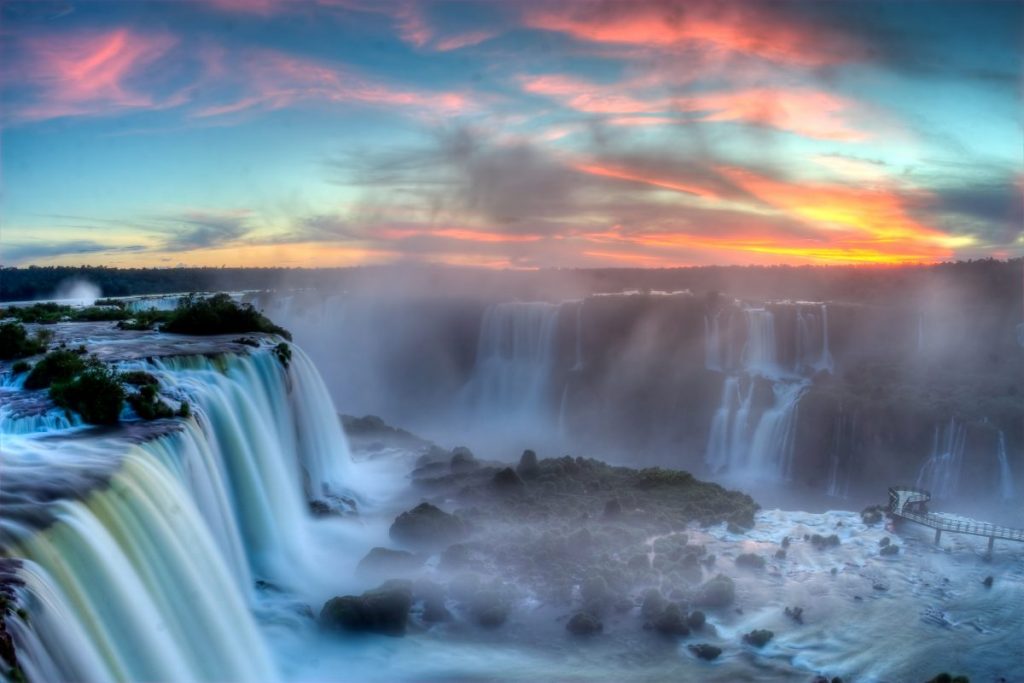
Photo: SF Brit (Flickr)
10. Get out of the city!
Look, I know Brazil is famous for these insane big cities. But if you think that the culture is famous in major Brazilian cities, like Rio de Janeiro, imagine the extent of the culture outside of it. That’s where you’re going to find all the real food, music, parties, and general life.

My missus travels with all her clothes in ziplock bags: don’t be like my missus. UP YOUR PACKING GAME!
Packing cubes for the globetrotters and compression sacks for the real adventurers – these babies are a traveller’s best kept secret. They organise yo’ packing and minimise its volume too so you can pack MORE.
Or, y’know… you can stick to ziplock bags.
View Our Fave Cubes Or Check Out the Sacks!Backpacker Accommodation in Brazil
Brazil hostels are lively places and very common. Only in the most remote places will you need to resort to some other form of accommodation.
A good hostel should run you about $10-$15 in all of the major cities. You could find a bed for less than $10, but I would never pay more than $15 unless forced.
Many of the lesser-visited destinations – the beach towns, and especially the northeastern cities – are usually cheaper. It’s also where you’ll find some of the world’s most stunning hostels.
Pousadas are common. Essentially, a pousada is a local guesthouse; local vibes, cool people, and lots of options for all budgets.
Note that accommodation is subject to seasonal rates. This trend is very noticeable when backpacking Brazil. Rates could double or triple based on the time of year.
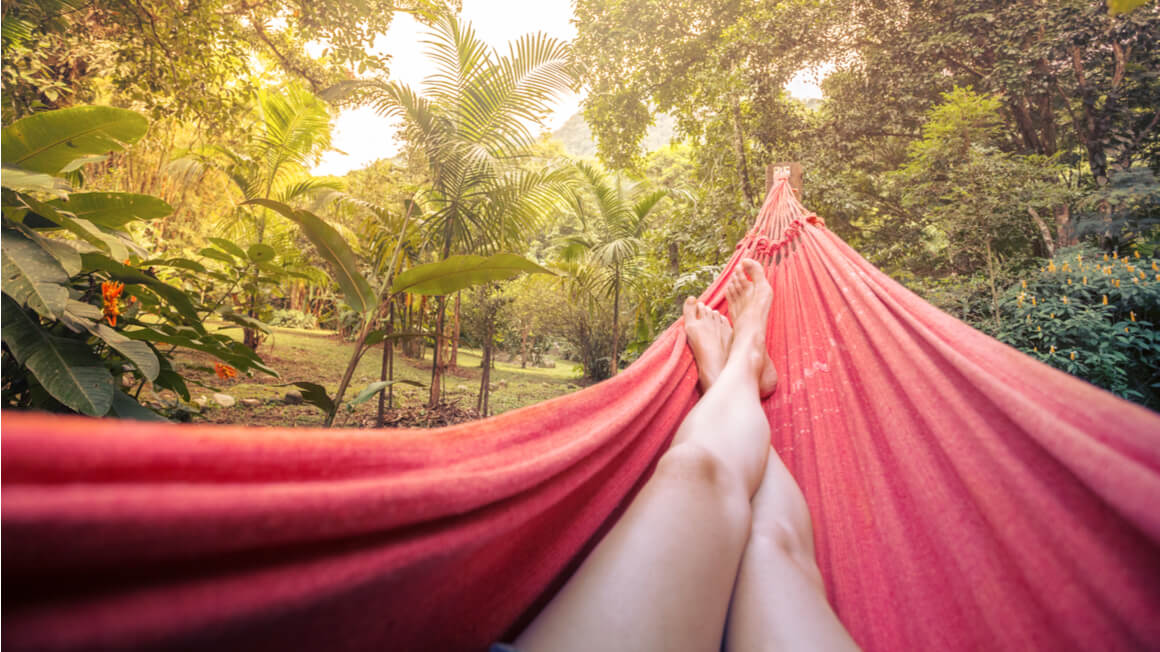
When you’re in the wild, you’ll have to find some other way to rest your head. Fazendas are local ranches that essentially serve as a guesthouse and a farm at the same time. These can be a lot of fun!
Camping and lodges are very common in the jungle as well. Expect lots of these in places like the Amazon, Pantanal, and national parks.
Finally: be aware of the “motels” or moteis while backpacking Brazil. These are almost always exclusively used for sex, and most people only stay an hour or two, for obvious reasons.
The Best Places to Stay in Brazil
There’s nothing like the feeling when you find yourself in that killer accommodation. So here’s a quick rundown of the best of the best!
| Destination | Why Visit! | Best Hostel | Best Airbnb |
|---|---|---|---|
| Rio de Janeiro | You’ve heard the stories. But don’t just live a whole life of what if’s. | Books Hostel | Copacabana Penthouse |
| Sao Paolo | This metropolis giant is one of those places that you have to see it to believe it. | O de Casa Hostel | Sunny Skyline |
| Curitiba | One of the most beautiful cities in Brazil. It makes a great layover. | Curitiba Casa Hostel | Luxury High Loft |
| Florianopolis | If you look up “paradise” in the dictionary you get a picture of Florinapolis. | Pup Hostel SC | Sea & Stone Chalet |
| Bahia | There’s no where that sums up Brazilian culture better than Bahia. | Puleiro Hostel | Super Vista |
| Northeast Brazil | Colour, culture, and a whole lot of chilling. Follow the rhythm to the northeast. | Lagarto na Banana | Casa Tropical Vegetation |
| Jericoacoara | This little hippie hideout is gonna make you never want to leave Brazil. | Mandala Hostel | Preguiça’s Bungalow |
| Iguaçu Falls | If you want to see power in its truest form, check this place out. | Tetris Container Hostel | Riverside Paradise |
| Pantanal | This area has one of the densest collections of nature in the world. | Bonito Hostel | Little Forest House |
| The Amazon | The legend that is… the Amazon. Need I say more? | Local Hostel Manaus | Waterfall Pool House |
| Minas Gerais | Often overlooked, never forgotten. | Da Orla Pampulha Hostel | City Peace & Charm |
Brazil Backpacking Costs
By South American standards, the cost of living in Brazil is quite expensive. Without caution, travel expenses can add up quickly.
Those who want to go backpacking through Brazil with relative comfort should budget $40-$50 per day. That will get you a nice dorm bed, food and snacks, a meal in a restaurant, and some fun on the side. But hey, it’s easy to save money on these things too.
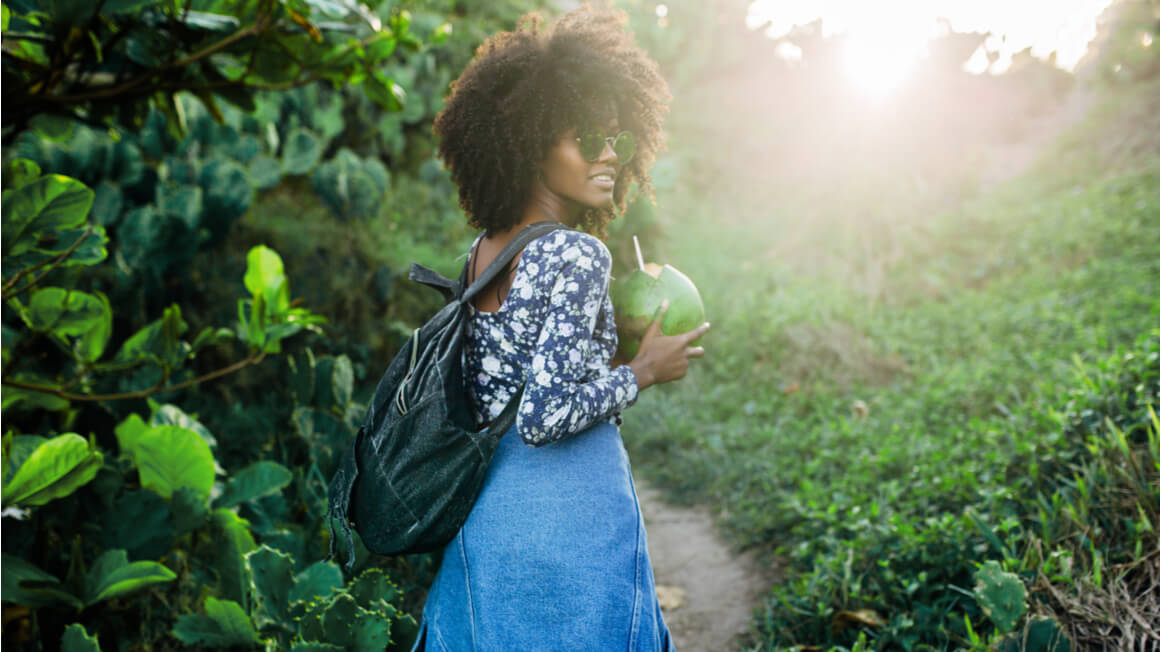
If you’re flying around Brazil, backpacking and heading on a load of excursions, be prepared to pay for it. Though if you’re prepared to slow it down, travelling on a budget is easily doable.
Prices in Brazil fluctuate heavily depending on the time of year too: the peak season is between December and April when locals are gearing up for Carnaval. This is where your Brazil trip costs would be at the highest point.
The price of a bed during the big holidays like New Year and Carnaval could triple or even quadruple. This effect is nationwide.
Prices will fall dramatically around the end of April. July rises slightly again for the Brazilian school holiday but this is brief.
Now you know all that, maybe using Couchsurfing is an answer. Brazilians are very hospitable and you’re usually getting a way better experience than just a bed. One of my hosts in São Paulo actually gave us the full apartment while we had to COVID quarantine for 10 days.
Partying in Brazil can suck your cash the most if you’re not careful. A beer here, a cocktail there, a bit of coke?
A Daily Budget for Brazil
So now we’ve covered the nitty-gritty, here’s a quick summary of what you can expect with the cost per day while backpacking Brazil.
| Expense | Broke Backpacker | Frugal Traveler | Creature of Comfort |
|---|---|---|---|
| Accommodation | $10-15 | $25-$50 | $60+ |
| Food | $5-$10 | $10-20 | $30+ |
| Transport | $5 | $10-$20 | $40+ |
| Nightlife | $5-$10 | $10-$20 | $25+ |
| Activities | $5-$10 | $15-20 | $30+ |
| Total Per day | $30-$50 | $60-$130 | $185+ |
Money in Brazil
The real is the national currency of Brazil. And this little bastard likes to fluctuate – a lot.
As of May 2022, the current exchange rate is $1 USD = 5.1 Reales
But don’t take my word for it, because the exchange rate has probably already changed.
ATMs are widely available throughout the country and chip and pin is pretty big here. So if you have an international card here you should be good. Most ATMs charge a transaction fee for foreign cards.
Just a heads up: there are reports of people having their credit card information stolen at ATMs. This is uncommon but can be avoided by exclusively using machines at official banks.

There are some remote parts of Brazil that have fewer cash withdrawal services or don’t accept cards. These locations are very remote though. Carry some cash, but not an excessive amount, unless you feel like losing it.
Robberies aren’t uncommon in Brazil. They are more common if you’re a doofus though.
If you’ve enough money to travel to Brazil, you’re going to see a lot of people poorer than you. Some of those people need money desperately.
Just be smart and hide your valuables well to avoid trouble. I’ve known people to actually carry a “dummy” wallet on them just in case a robbery should occur.
Travel Banking for Brazil
For all matters of finance and accounting on the road, The Broke Backpacker strongly recommends Wise – The artist is formerly known as transferwise! Our favourite online platform for holding funds, transferring money, and even paying for goods,
Wise is a 100% FREE platform with considerably lower fees than Paypal or traditional banks. Really, it even beats out Western Union.
Travel Tips – Brazil on a Budget
Hey, I was backpacking Brazil on a very similar budget to some of the cheapest places in the world. To keep your spending to an absolute minimum whilst backpacking Brazil I recommend sticking to the basic rules of budget adventuring….
- Hitchhike; In Brazil, it is relatively easy to thumb a ride. Hitchhiking is an ace way to keep your transport costs down.
- Camp; With plenty of gorgeous natural places to camp, Brazil is a dream. If you have a good quality tent, it’s usually much cheaper to pitch than staying in guesthouses. Sometimes you can even pitch for free.
- Couchsurfing; Hey, Brazilians are great hosts. When you find a host, you’re definitely made to feel at home while saving some dolla’.
- Eat local food; Street food is usually cheap. Look for the “prato feito” (prepared plate) or Marmitex too. They’re cheap and big enough to feed you all day. If you’re on a real tight budget – it’s worth taking a good portable stove.
- Pack a travel water bottle and save money every day!
Why You Should Travel to Brazil with a Water Bottle
Brazil is a place where nature is thriving more than most places on the whole planet. It makes it that much more heartbreaking when you see it littered with plastic. So please try to make a positive impact on the problem.
You can’t save the world overnight but you can make a difference! So I hope you become more inspired to continue being a responsible traveller.
Plus, now you won’t be buying overpriced bottles of water from the supermarkets either! Travel with a filtered water bottle instead, keep nature happy, and never waste a cent again.
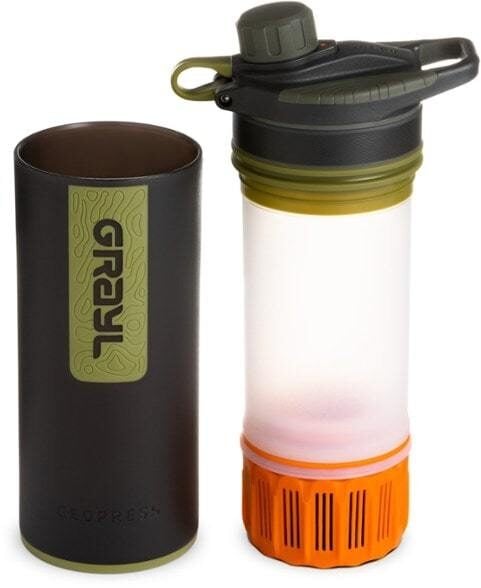
Drink water from ANYWHERE. The Grayl Geopress is the market’s leading filtered water bottle protecting your tum from all the waterborne nasties. PLUS, you save money and the environment!
Single-use plastic bottles are a MASSIVE threat to marine life. Be a part of the solution and travel with a filter water bottle.
We’ve tested the Geopress rigorously from the icy heights of Pakistan to the tropical jungles of Cuba, and the results are in: it WORKS. Buy a Geopress: it’s the last water bottle you’ll ever buy.
Buy a Geopress! Read the ReviewBest Time to Travel to Brazil
Due to its huge size and drastic diversity, the climate in Brazil changes dramatically. But we can break Brazil down into 3 general areas: South/Central, Northeast, and North.
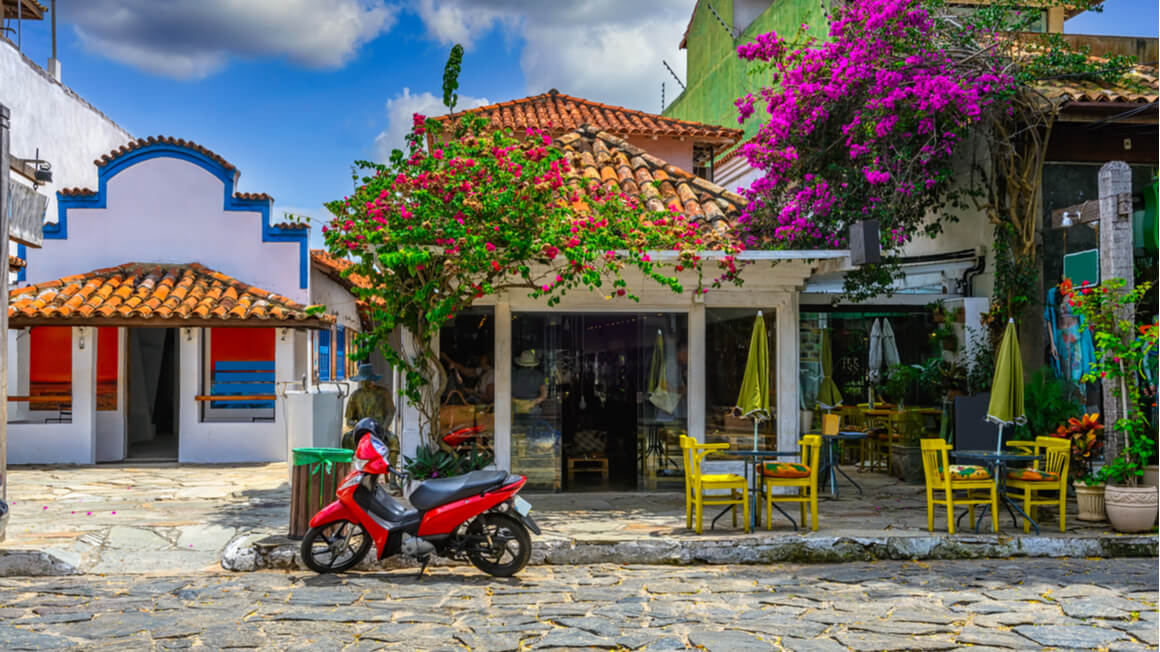
Generally speaking, between November and March, the southern half of Brazil is rainy season. This coincides with the southern hemisphere’s summer. You can pretty much count on getting wet during this time.
Though nearly every state in this region has a hot humid summer, not everyone experiences the same winter. The southern states can be markedly cold in the winter.
This is a relative chill though. People from Northern Europe or America will still feel very warm.
The Northeastern section of Brazil receives tropical rains between April and August. This means that it pisses it down, but you can probably guarantee sun in a few hours. The temperature is very steady throughout the year in the Northeast.
If you leave the northeastern coast and travel inland, you’ll end up in the sertão, or “Brazilian Outback.” This is a desert and receives very little of the Northeast’s tropical rain. Draught is a frequent occurrence in the sertão.
The North consists mostly of the Amazon Rainforest. It pretty much rains all year in the Amazon. Some parts of the Amazon do see a more observable “dry season” between the months of July and December, but it still rains a lot. It’s hotter during dryer months too.
Depending on your preference, the north of Brazil can be visited year-round. But both seasons offer pros and cons.
The Amazonian dry season has better access to trails and fewer mosquitoes. The wet season has easier river navigation and cooler temperatures.
What to Pack for Brazil
Your South America packing list is likely to look very different than when you’re travelling to other continents. For starters, a mosquito net is invaluable. Actually, just bring everything to prepare for those little bastards.
As well as this, there are 6 things I wouldn’t travel to Brazil without:
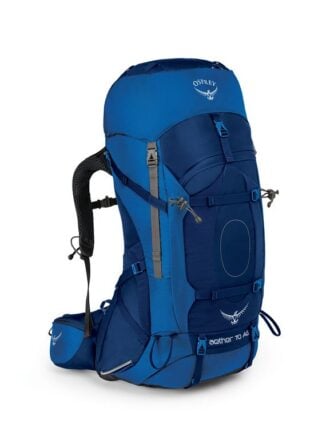
Osprey Aether 70L Backpack
Ya can’t go backpacking anywhere without a blasted backpack! Words cannot describe what a friend the Osprey Aether has been to The Broke Backpacker on the road. It’s had a long and illustrious career; Ospreys don’t go down easily.
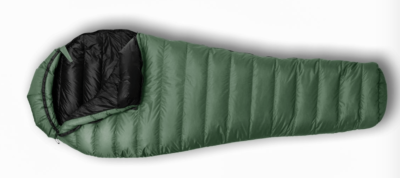
Feathered Friends Swift 20 YF
My philosophy is that with an EPIC sleeping bag, you can sleep anywhere. A tent is a nice bonus, but a real sleek sleeping bag means you can roll out anywhere in a and stay warm in a pinch. And the Feathered Friends Swift bag is about as premium as it gets.
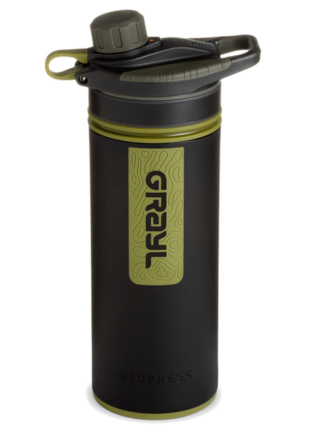
Grayl Geopress Filtered Bottle
Always travel with a water bottle! They save you money and reduce your plastic footprint on our planet. The Grayl Geopress acts as a purifier AND temperature regulator – so you can enjoy a cold red bull, or a hot coffee, no matter where you are.

Petzl Actik Core Headlamp
Every traveller should have a head torch! A decent head torch could save your life. When you’re camping, hiking, or even if the power just went out, a top-quality headlamp is a MUST. The Petzl Actik Core is an awesome piece of kit because it’s USB chargeable—batteries begone!
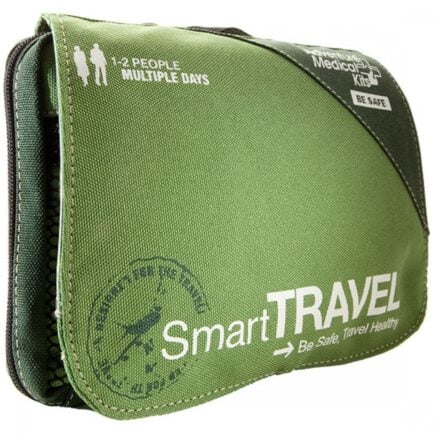
First Aid Kit
Never go off the beaten track (or even on it) without your first aid kit! Cuts, bruises, scrapes, third-degree sunburn: a first aid kit will be able to handle most of these minor situations.
Staying Safe in Brazil
You’ve probably heard some horror stories about how dangerous Brazil is. But let me get it straight: Brazil is safe to travel to.
That’s not to say it’s without its problems. For sure, I never saw someone being chased by some loco wielding a knife until I went to São Paulo. Yet, I left São Paulo completely unscathed.
If you’re following standard safety practices, like you should everywhere in the world, crime is very unlikely to affect you. If you do find yourself in an unfortunate situation though, don’t resist; it’s really not worth the risk.
For me, the most dangerous part of Brazil was some stairs. Yes… the stairs.
I slipped in the rain and broke my back. So if you’re a clumsy arse, like me, be aware that health and safety regulations don’t have your back here. (See what I did there?)
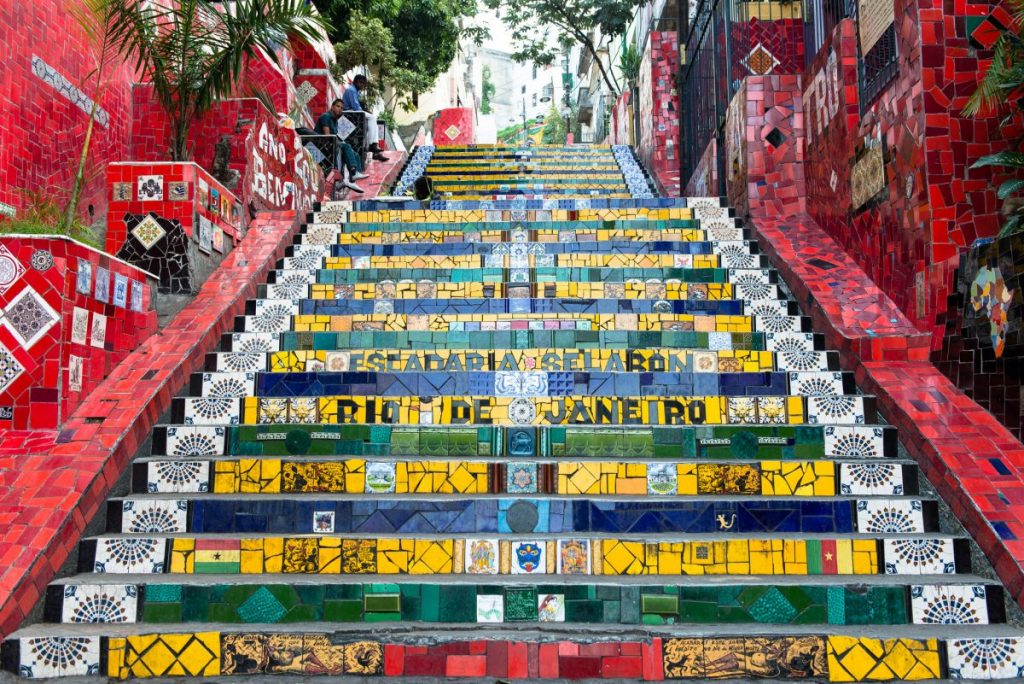
Photo: vincentraal (Flickr)
Criminals target drunks because they are easy prey. Tourists have that invisible dollar sign floating above your head. So just be cautious, don’t wander into parts of town you know nothing about, and you needn’t be worried.
Be aware that drinking is not as ingrained in Brazilian culture as in the rest of the Western World. Most of those backpacking Brazil can go a little harder than usual. In this kinda state, again, you’re an easy target.
Keep an eye out for the Brazilian police as well. These guys are underpaid, stressed out, potentially corrupt, and a lot of times just don’t give a shit.
Now, I’m not saying that all policia are bad; there are always exceptions. I’m saying don’t risk breaking the law and dealing with the guy who’s had a bad day.
Lastly, many mosquito-borne illnesses like yellow fever and Zika are extremely uncommon nowadays. Though there’s no shortage of those little bastards so prepare yourself for mosquitos.
Sex, Drugs, and Rock n’ Roll
If you’ve been paying attention to this guide, then it’s pretty clear that Brazil loves to party. Carnaval is the world’s most renowned party. For Carnaval, all usual rules go out the window: dress code, dignity, and even monogamy – in some cases.
So how to party SAFELY while backpacking in Brazil? Instead of talking about the irresponsible amount of coke and sex that you can have, I’m going to share some words of caution.
Of course, we are in South America now. So drugs on the road are almost unavoidable. Drug dealers are notorious for trying to scam naive tourists.
Generally, tourists are just easy to mug off. You arrive at a beautiful beach and all you want is a fat joint. Many of those mugs are ready to pay whatever extortionate price they are quoted.
They’re probably going to cut coke with a lot of shit – that’s just the truth. Unsuspecting tourists who don’t know any better can end up getting really fucked up.
Just be aware of who you are buying from. Don’t ever go searching for a score on your own! Tourists in the wrong part of town with large wads of cash, ready to score drugs make easy targets.
Try and enlist the help of a local. Hostel staff, though apprehensive, will usually have your best interest in mind.
Prostitution in Brazil
Look, I’m not going to beat around the bush when it comes to sex tourism in Brazil. (No pun intended.) Sex is one of Brazil’s biggest exports.
Prostitution is – and always has been – a legitimate profession. And there will always be a market for this service too. So it’s important that it’s addressed with respect and safety in mind.
The HIV/AIDS epidemic has stymied in the last few years, but the disease isn’t completely eradicated. If you do lay with a hooker, please wrap your tool.
A common scam is prostitutes robbing you blind while you’re knocked out from that wild ride too. It doesn’t happen all the time, but be aware of it. Secure your belongings in a safe place, which you should be doing while backpacking around Brazil anyways.
And most importantly, just be considerate. They are humans, regardless of their profession, and they deserve respect, like everyone else.
Getting Insured BEFORE Visiting Brazil
Look, I know that having to pay for something you hopefully won’t use sounds very unexciting. But believe me, if (and when) things don’t go to plan, being prepared is a huge weight lifted. That’s why good travel insurance is essential BEFORE you start your adventure.
World Nomads’ mission is to support and encourage travellers to explore their boundaries. They offer simple & flexible travel insurance, and safety advice to help you travel confidently.
They’ve been doing it since 2002 – protecting, connecting, and inspiring independent travellers just like you.
Get a quote below or read our in-depth review!
World Nomads provides travel insurance for travelers in over 100 countries. As an affiliate, we receive a fee when you get a quote from World Nomads using this link. We do not represent World Nomads. This is information only and not a recommendation to buy travel insurance.
How to Get Into Brazil
There are many entries to Brazil by land and air. Almost every major Brazilian city has an international airport. São Paulo and Rio de Janeiro are the largest airports in the country. Chances are you’ll probably fly into one of these.
You can fly directly to Brazil from pretty much every continent with the exception of Australia. You can generally find cheap flights to Brazil after April – once the holidays are over.
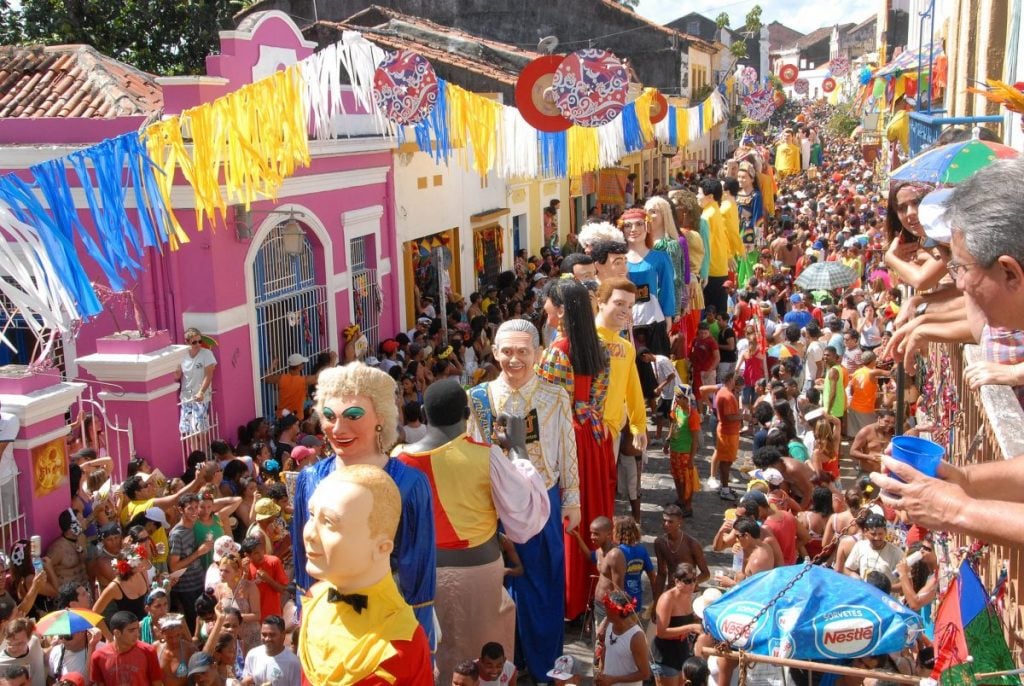
Photo: Prefeitura de Olinda (Flickr)
In case you’re not geographically aware: Brazil shares a border with every South American country besides Ecuador and Chile. With the exception of Suriname and French Guiana – where there are no roads – you can cross the land border from any of these.
Note that travelling by road, especially by bus, can take a long time in South America. Journeying between capitals can take days.
Most of Brazil’s border crossings are safe. The ones in the south are especially secure. Border crossings do become limited and tedious when you’re in the Amazonas region, but the outposts shouldn’t hassle you any more than usual.
The Venezuelan border has become strict in the last few years following the nation’s economic collapse. Tourists travelling in Venezuela are not targeted too heavily: the increased security is mostly to control the influx of fleeing Venezuelans. But it is surely not the most friendly experience in the world.
Entry Requirements for Brazil
Depending on your nationality, visitors applying for a Brazilian tourist visa fall into one of three categories:
- visa-free nations that require an ID card
- visa-free nations that require a passport
- nations that require a visa
Nearly every South American nation can enter Brazil visa-free with only an ID card. The exceptions are Suriname, French Guiana, and Guyana. These nations require a passport, but not a visa.
Aside from Venezuela, all South American nationals can stay in Brazil for up to 90 days. Venezuelans can only stay 60 days.
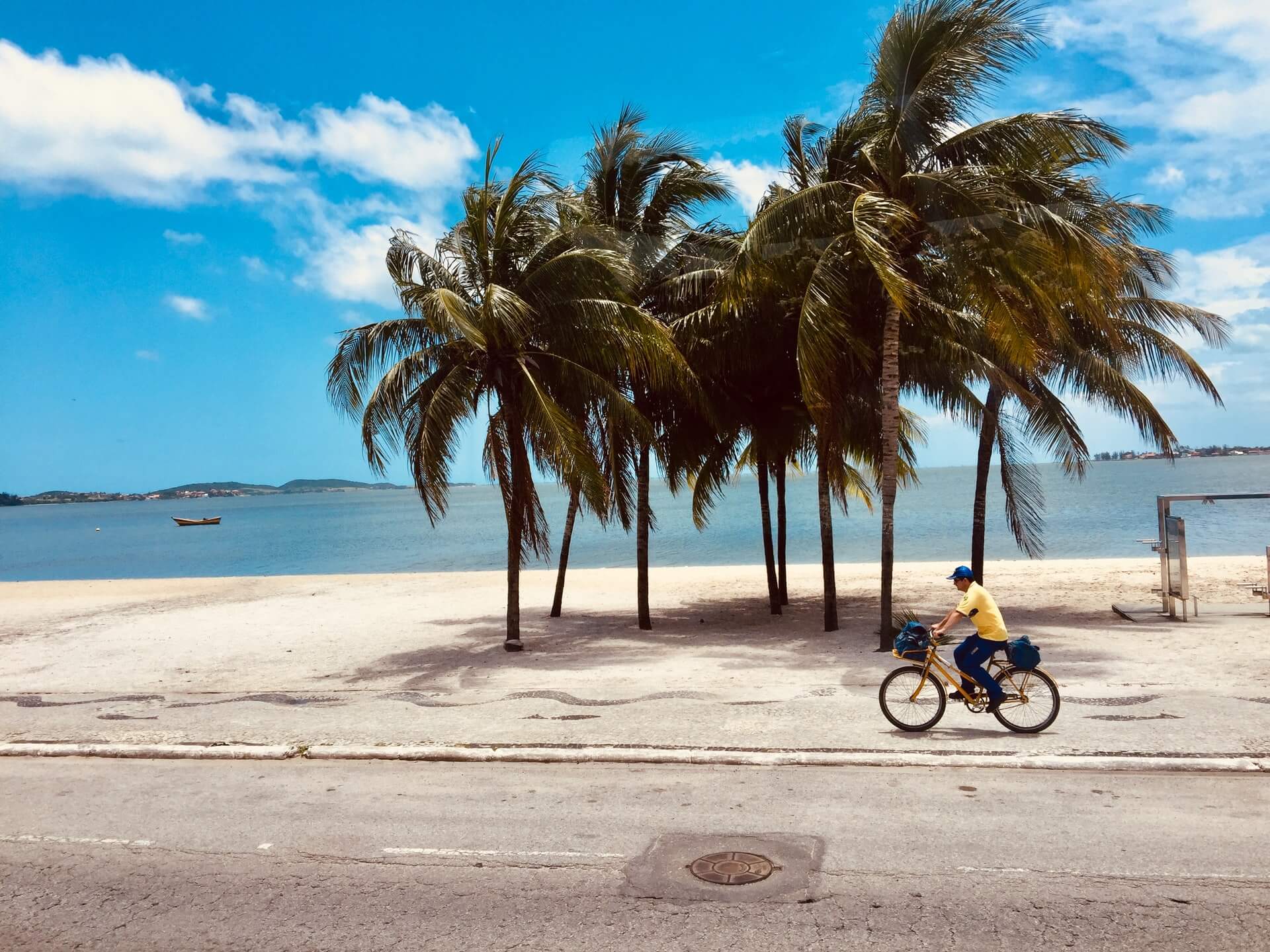
Many countries can enter Brazil visa-free with only a passport. Most Western nationalities, including the US, UK, and EU, are included in this category.
Some Asian and African nationalities are also included. Be sure to check your country’s status.
Some nationalities unfortunately need to pay for a visa to enter Brazil. These fees are based upon reciprocity i.e. whatever your nation charges for Brazilians to enter, Brazil charges you. Depending on your nationality, the fees can also be quite high.
Thankfully, Brazil has implemented an e-visa program in the last few years that has greatly streamlined the process. These e-Visas are convenient and sometimes cheaper.
E-Visas are not available to every country though. Be sure to check the Brazilian immigration website for specific details.
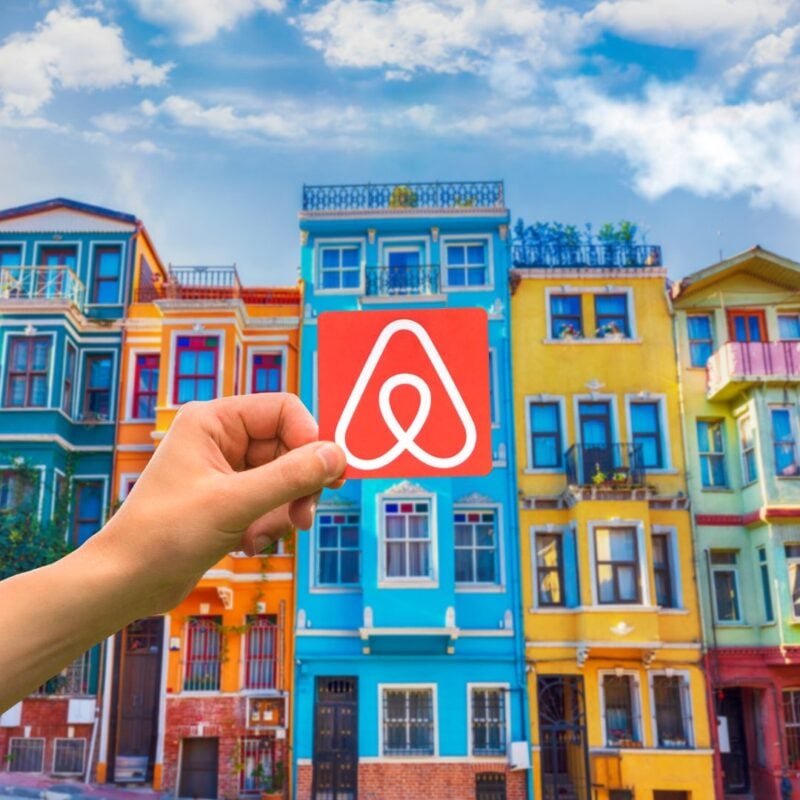
Why stay in a naff hotel when you can stay in a cosy, stylish local house instead? And for half the money too!
Stay somewhere EPIC and save your hard-earned dollars — from houses to barns to castles and caves, there is an Airbnb for every occasion!
Book an EPIC StayHow to Get Around Brazil
Buses are South America’s bread and butter. Understanding the system is easy and, once you’re familiar, it’s one of the most useful travel tips for the continent. You can get just about anywhere with them.
It’s just a case of preparing yourself: Brazil is massive and journeys can be long. Luckily, long-distance buses are very comfortable and the roads are smooth.
The sleeper buses in particular are very nice. I slept through many a multi-day journey on these sleepers like a baby. Long-distance buses will, of course, have a bathroom and stop for food every 4 hours or so.
Buying bus tickets in advance is recommended. It’s pretty disappointing to plan your journey to find out the bus you wanted to be on is sold out. Plus, companies will sometimes charge you less if you book in advance at the bus station.
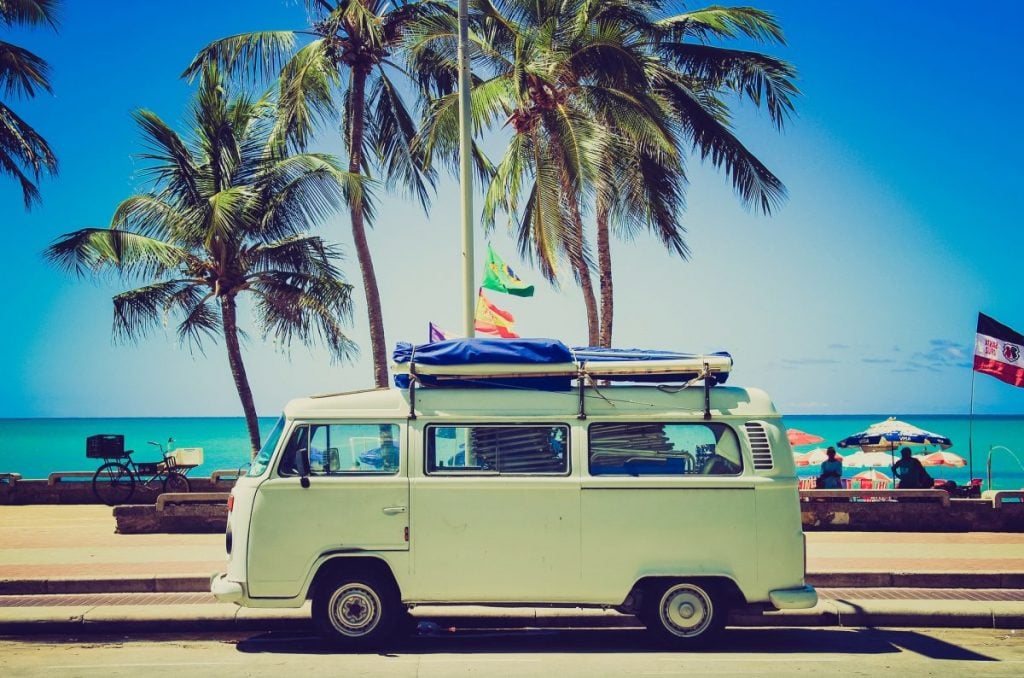
Depending on your personal requirements, you can use domestic flights to get around Brazil. These days, air travel is becoming more affordable so planes are becoming more realistic for broke backpackers.
Brazil’s airports are generally well connected. There are “corridor” lines from big destinations such as São Paolo, Rio de Janeiro, Salvador, etc. that offer cheaper flights to and from smaller destinations.
It is cheaper to purchase domestic tickets from inside Brazil too. This way, you avoid extra taxes.
Hitchhiking in Brazil
Travelling by hitchhiking in Brazil is comparable to many other large, industrialized countries, risks and rewards included. In touristy areas, you should find a ride easy enough. Locals are super friendly.
In less touristy areas, there’s every chance you may not find a ride at all and it can be pretty dodgy. I have personal reports to avoid the Northeast and the state of Espírito Santo.
Take the usual precautions, and use the same strategies. Note that Brazilian drivers do have a reputation for being reckless. You could also be mingling with dangerous types while waiting for a ride in the cities.
 Use Bookaway to find the best deals on transport – buses, planes, trains, and ferries. It’ll save you a load of time when organising transport and you’ll probably nab an EPIC DISCOUNT too!
Use Bookaway to find the best deals on transport – buses, planes, trains, and ferries. It’ll save you a load of time when organising transport and you’ll probably nab an EPIC DISCOUNT too!
Book your transport on Bookaway NOW. Get the best price for the best ride… then use those savings to buy the best feed in town!
Book Your Transport Here!Onwards Travel From Brazil
Brazil shares a border with nearly every other South American country, apart from Chile and Ecuador. Travel by bus is pretty straightforward.
They are very accustomed to moving people across borders in South America. It can be a bit cheaper but make sure you have all your documents prepared to avoid being stopped.
All borders can vary slightly, I’m not writing gospel here: it will pay to do your own research. But you may need to show the following documents:
- Passport or ID card
- Visa (if required)
- Your entry/exit card (given to you when you arrive in Brazil)
- Proof of onward travel
- Proof of vaccinations (Covid, Yellow Fever etc. if required)
Flying across borders is a little less strict. But still, do I have to remind you – a traveller – to prepare your documents well, again?
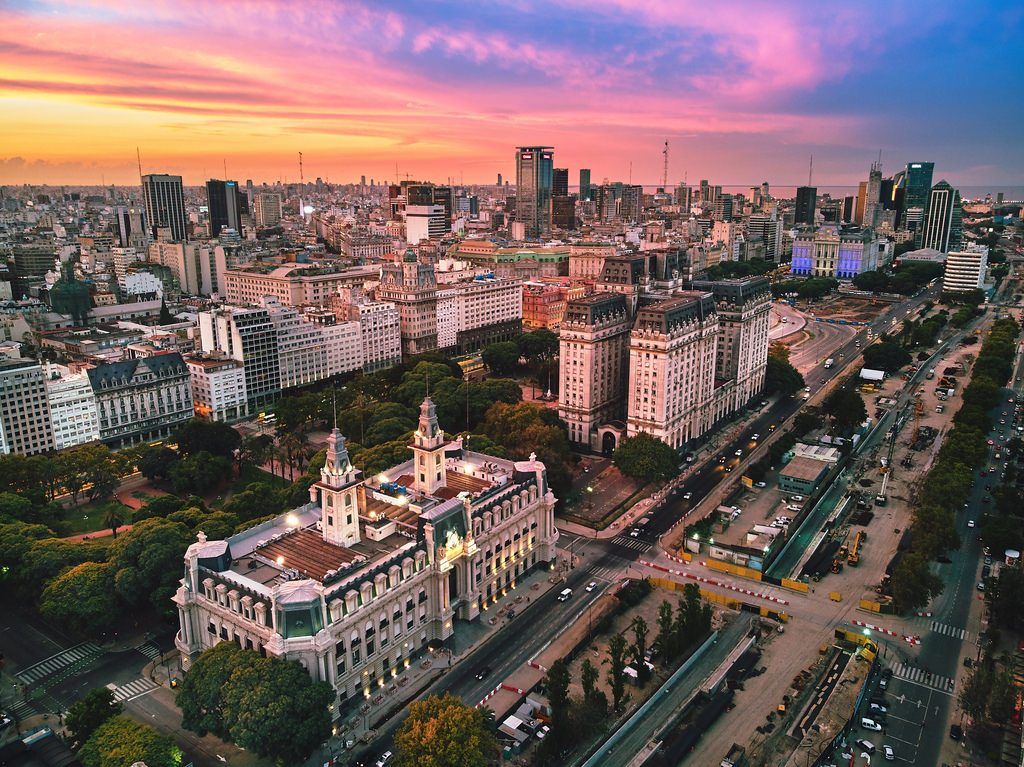
Photo: Deensel (Flickr)
Visas are either issued at the border or are available as an e-Visa. Every passport has its own restrictions, so be sure to check with your government’s website.
Some South American countries want proof of Yellow Fever vaccination. If you’ve received one, make sure to have the document with you for proof.
Providing proof of onward travel is sometimes enforced, and sometimes not. If you find yourself without an onwards ticket, maybe you could talk your way out of it. Just be polite and you should be fine.
Working in Brazil
Getting a traditional job in Brazil isn’t straightforward. Although unemployment isn’t as high as it is in other South American countries, work visas are pretty hard to come by – unless you’re from another South American country and part of the Mercosur.
But wait! Brazil is becoming an increasingly popular place for home working: beautiful nature, reasonable costs of living, and epic activities make one hell of a country for digital nomads.
Digital nomads might be drawn to typical Brazilian hotspots like Rio de Janeiro or São Paulo. They’re hectic to live in, expensive, fiercely competitive, and not overly safe. If that’s your jam, cool – you’re gonna love it.
But did you really come to Brazil to work in a massive metropolis when you’re surrounded by paradise? Co-working spaces are popping up everywhere. Internet is mostly trustworthy and life is certainly sweet.
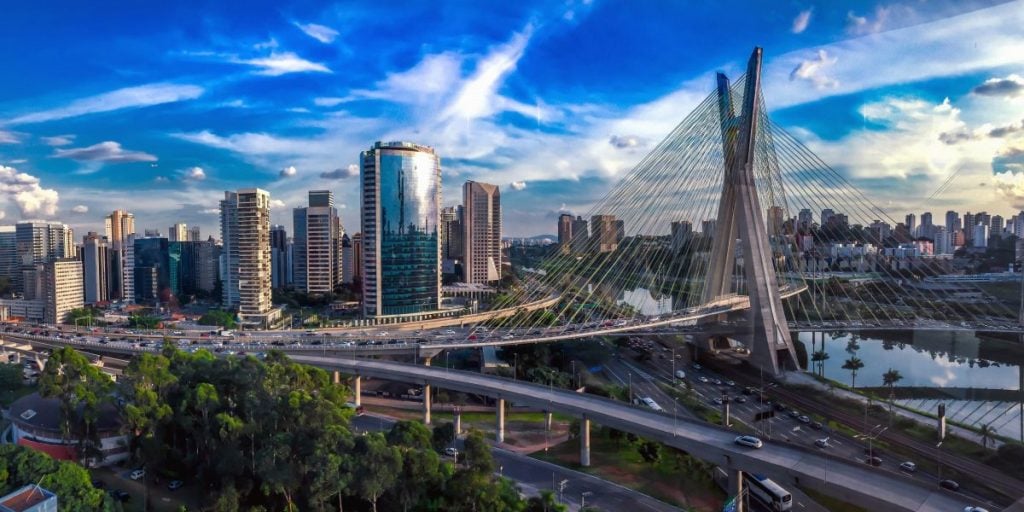
I am slightly biased toward Florianopolis: it is probably the most ideal place to live in Brazil – nomads and locals alike. The beaches are incredible, there are tons of things to do, and the quality of life is fantastic.
I really had to drag myself away from my tropical, beachside garden paradise. I can easily see myself back there one day.
But go and find your own haven. Belo Horizonte, Bahia, and backpacker hideout Jericoacoara all have growing communities too.

A new country, a new contract, a new piece of plastic – booooring. Instead, buy an eSIM!
An eSIM works just like an app: you buy it, you download it, and BOOM! You’re connected. It’s just that easy.
Is your phone eSIM ready? Read about how e-Sims work or click below to see one of the top eSIM providers on the market and ditch the plastic.
Buy an eSIM!Volunteering in Brazil
Volunteering abroad is an amazing way to experience a culture whilst helping out a host. There are plenty of different volunteer projects in Brazil including teaching, construction, agriculture, and pretty much anything.
High levels of poverty mean Brazil is in desperate need of volunteers to offer a helping hand. English teaching, animal care, and social work are all areas where backpackers can make a big difference. Digital skills are also increasingly sought after including, web development, content writing, and photography.
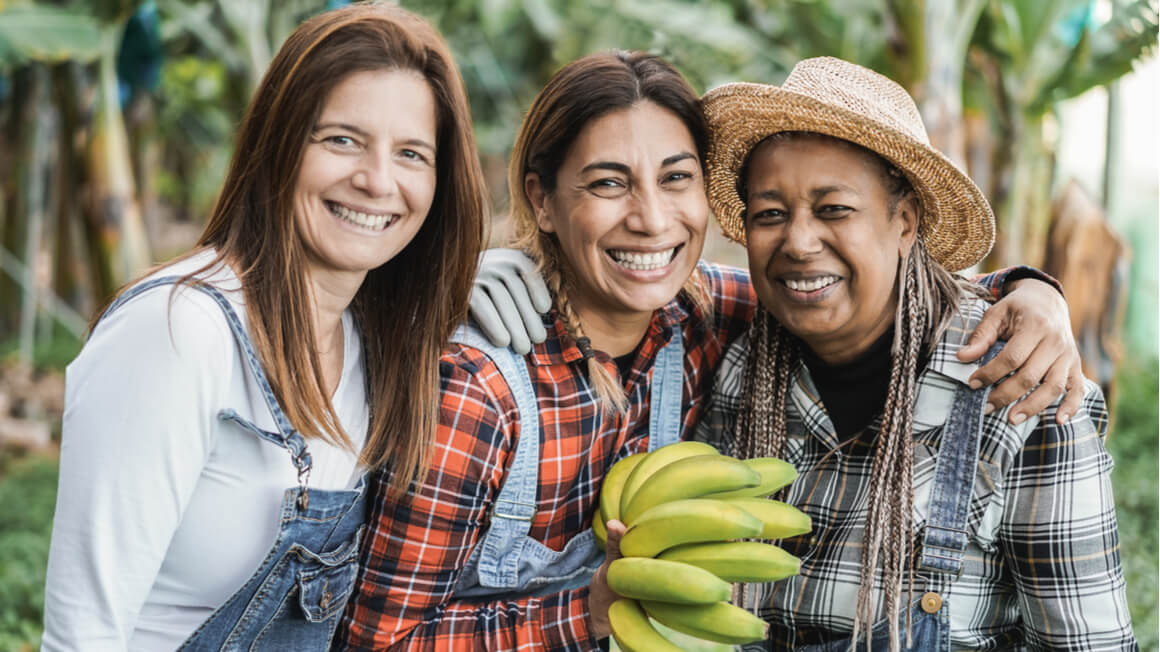
You may need a temporary work visa to volunteer in Brazil. If so, apply before you go.
Programs run through reputable work exchange programs, like Worldpackers, are generally very well-managed and highly reputable. Just remember to be responsible, especially if you’re working with animals or children.
Signing up for Worldpackers is a great way to connect to local hosts with volunteer opportunities. As a Broke Backpacker reader, you’ll also get a special discount of $10. Just use the discount code BROKEBACKPACKER and your membership is discounted from $49 a year to only $39.

Worldpackers: connecting travellers with meaningful travel experiences.
Brazilian Culture
Brazil is one of the most ethnically diverse places in the world. Brazil’s breadth of colour comes from its colonial roots and forms its unique culture. Diversity is sung in Brazil and they are generally open about their race.
Fairer Europeans travelled across the ocean to the New World and settled in Brazil. They brought with them ebony slaves from Africa and subjugated the native Amerindian people. Eventually, all of these cultures commingled and gave birth to this dramatic, rhythmic, passionate nation.
There is something about the warmth of Brazil that goes beyond the weather. Brazilians are a famously lovely and smiley people. Expect them to be very up-front and touchy.
Also, expect very candid conversations. Brazilians love to share their deepest secrets with others and have no shame in telling you how they feel.
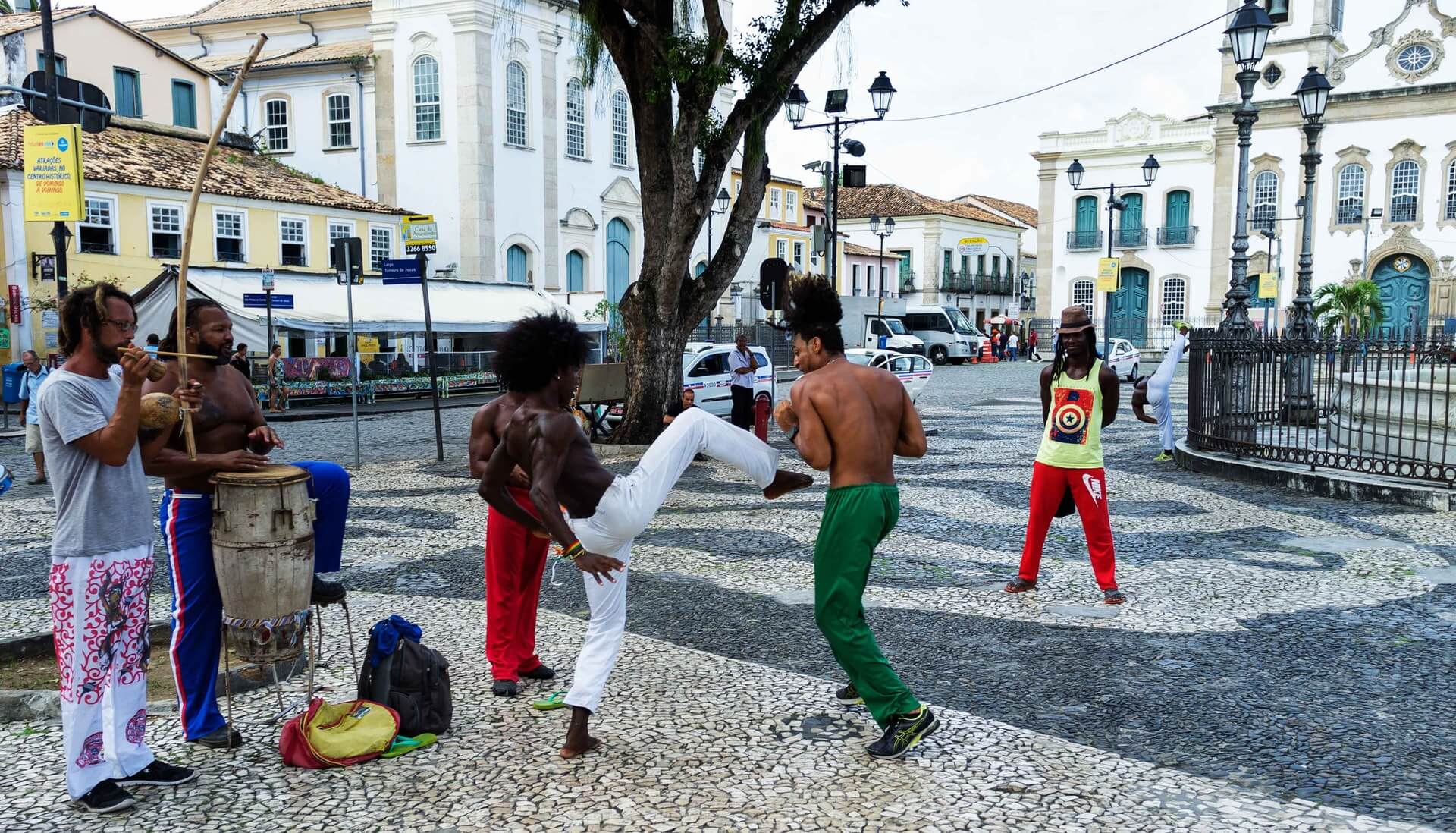
Having European roots, the Brazilian culture is actually quite western. There are some who argue its place in Western society. In my opinion, though, it’s Western enough to warrant some worthy comparisons.
In other areas, Afro-Brazilian culture is dominant and the strong African influence is unmissable. This beautifully brilliant blend leads to some of the best music, art, and language in the world. These cultures combined with the native culture and respect create something you won’t find anywhere else.
Brazil relies heavily upon an industrialized economy and workforce. In fact, more Brazilians live in an urban setting than North Americans – 87% vs 79%.
It’s safe to say that Brazilian society is relatively modern. Much of the Brazilian mindset is in line with most of the developed world.
Useful Travel Phrases for Brazil
People often make the mistake of thinking that Brazil speaks Spanish, much to the ire of the locals. Brazil was a part of the Portuguese Empire. Brazil speaks Portuguese.
Though if you are a Spanish speaker, particularly familiar with South American Spanish, this will stand you in very good stead. It’s Latin based and the written form does look a lot like Spanish. Once you understand some minor differences, you’ll find many similarities.
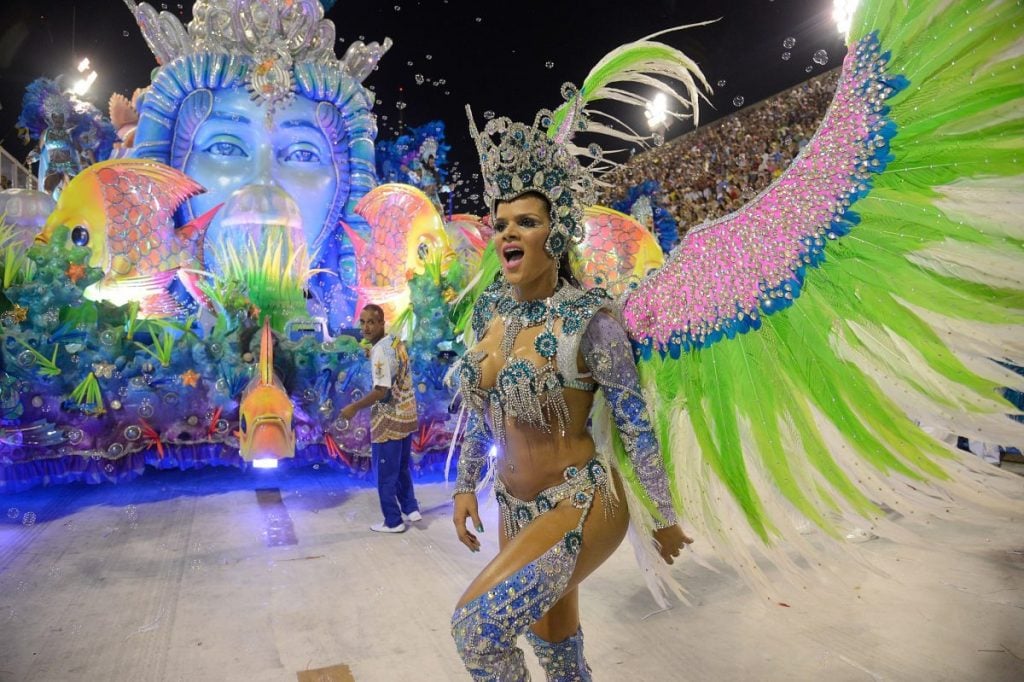
Photo: Agência Brasil Fotografias (WikiCommons)
Brazilian Portuguese is a gorgeous language and very different sounding from European Portuguese. The pronunciations could be mistaken for different languages. Brazilian Portuguese can sound like they are almost singing.
Even if their dialect and slang throw you off, locals will really appreciate you speaking some Portuguese. Though in many places it will actually be crucial to backpacking Brazil because English is not commonly spoken. This means it’s a great place to learn another language.
Arming yourself with some key phrases gets you off to a good start. Here’s a list of some of the most useful.
- Bom dia/boa tarde/boa noite – Good morning/afternoon/night
- Tudo bem? – All good?
- Meu nome é… – My name is…
- Onde fica a banheiro? – Where is the toilet?
- (O)brigado/(O)brigada** – Thank you
- Que saudades! – It’s been so long (since I’ve seen you)!
- Até logo – see you later
- Nenhum saco de plástico – No plastic bag
- Posso comprar um bilhete – Can I buy a ticket?
- Que horas são? – What time is it?
- Você fala inglês? – Do you speak English?
- Quanto custo? – How much?
- Valeu – Cool/thanks/cya
**Obrigado changes depending on the gender of the speaker. Men say obrigado. Women say obrigada. Though their language towards gender is still developing and there isn’t actually a neutral option – so I say use whatever you feel like really.
What to Eat in Brazil
Brazil has a reputation for a lot of street food involving meat and a lot of frying. Let me just tell you now, it’s true and it’s delicious. You will not struggle to find this kind of food.
But I would be doing Brazil a dishonour if I stopped there: Brazilian cuisine is fantastic! With all this crazy climate, things just grow in Brazil. One of the best things to do in Brazil is eating your body weight in exotic edibles.
Fruit drops off trees faster than you can eat it. I had 2 months of mangos and avocados coming out of my ears.
Traditionally, Brazilian food is a mix of European, Amerindian, and African styles. That being said, Brazilian cuisine is extremely variable. The food on your plate could be completely different depending on what region you’re in.
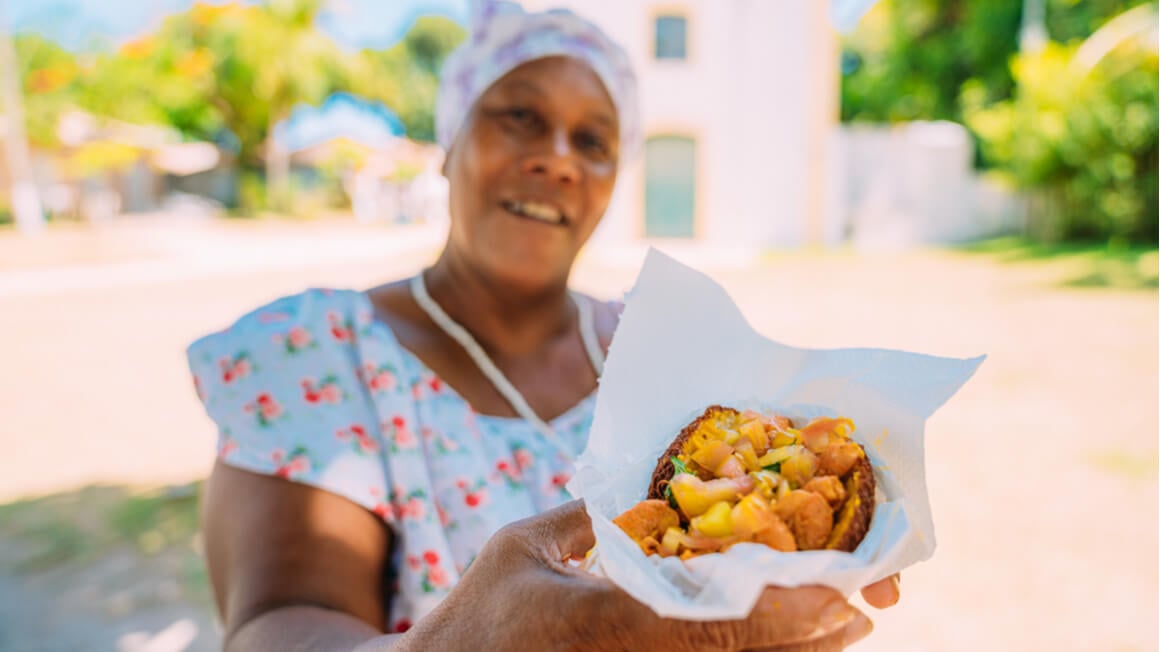
Broadly speaking, each region will use more or less a specific culinary style. The Northeast will be lots of African food. The Amazon will have more Amerindian food. The Southeast will have more European food.
Must-Try Dishes in Brazil
There are plenty of dishes that are essential to try when you’re visiting Brazil. Here is a list of some top ones.
- feijão – bean stew with meat and vegetables
- acai – dark berry often served sorbet style
- pão de queijo – cheesey bread bites
- Romeu e Julieta – guava paste – in cheese, obviously
- coxinhas – magic fried stuffed mashed potato
- vatapa – creamy dish w/ shrimp, nuts, coconut
- acarajé – hard to describe but damn delicious
- pastéis – fried pastries
- beijinho de coco – coconut truffles
- churrasco – barbecued meats
- cachaça – distilled spirit made from sugarcane
- caipirinha – mixed drink using cachaça, fruit, and sugar
A Brief History of Brazil
The history of Brazil dates long before the arrival of the Portuguese. For thousands of years, indigenous people – specifically, the tupi and guarani – inhabited this land.
Unlike the Peruvian Maya, they were a nomadic people who moved frequently in pursuit of food and treasures, like the brazilwood, cherished for the red dye it yields. Most of these people died from diseases brought by visiting Europeans. Many indigenous people never even met a European, though they still perished from their diseases.
Following the arrival of Europeans in the 17th Century, Brazil became a colony of ‘the new world’. The region was mostly controlled by the Portuguese Empire, though the Dutch held a few settlements in the north around Recife.
For centuries to come, the Portuguese would fight with the Dutch, Amerindians, and revolting slaves. The discovery of sugar, gold, rubber, and other precious resources made Brazil a valuable place.
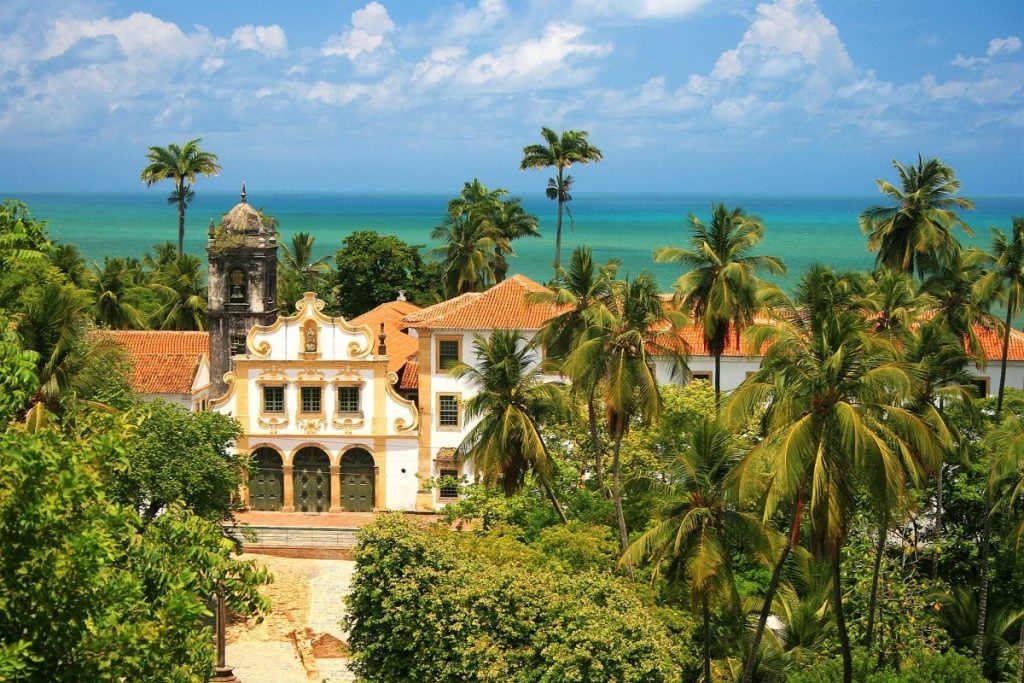
Photo: Valdiney Pimenta (Flickr)
In 1822, Brazil became independent from Portugal. This iteration was labelled the Brazilian Empire and included modern-day Brazil and Uruguay.
Slavery was widely practiced, even more so than in the United States. Over the next 150 years, Brazil would morph several times, from kingdom to republic to military dictatorship to what it is today.
Modern-day Brazil is a democratic country. Years of imperialism followed by despotism have left Brazil a nation with much to consider.
Though the nation is immensely rich, inequality is grossly apparent. Many have tried to reform Brazil for the betterment of the people, only to be setback by corruption and greed.
Like many new world countries, Brazil is a question waiting to be answered. Can wealth and social equality coexist? Only time will tell.
Some Unique Experiences in Brazil
Your backpacking Brazil trip is not going to look like anyone else’s. You have the opportunity to make your experience in Brazil totally unique. However you think your trip to Brazil will go, you can very well find yourself falling in love with something (or someone?) and end up with a great story to tell.

Things go wrong on the road ALL THE TIME. Be prepared for what life throws at you.
Buy an AMK Travel Medical Kit before you head out on your next adventure – don’t be daft!
Buy on REITrekking in Brazil
Trekking probably isn’t the first thing that pops into one’s mind when they plan on backpacking through Brazil. It’s a shame because Brazil has some of the best trails in the world.
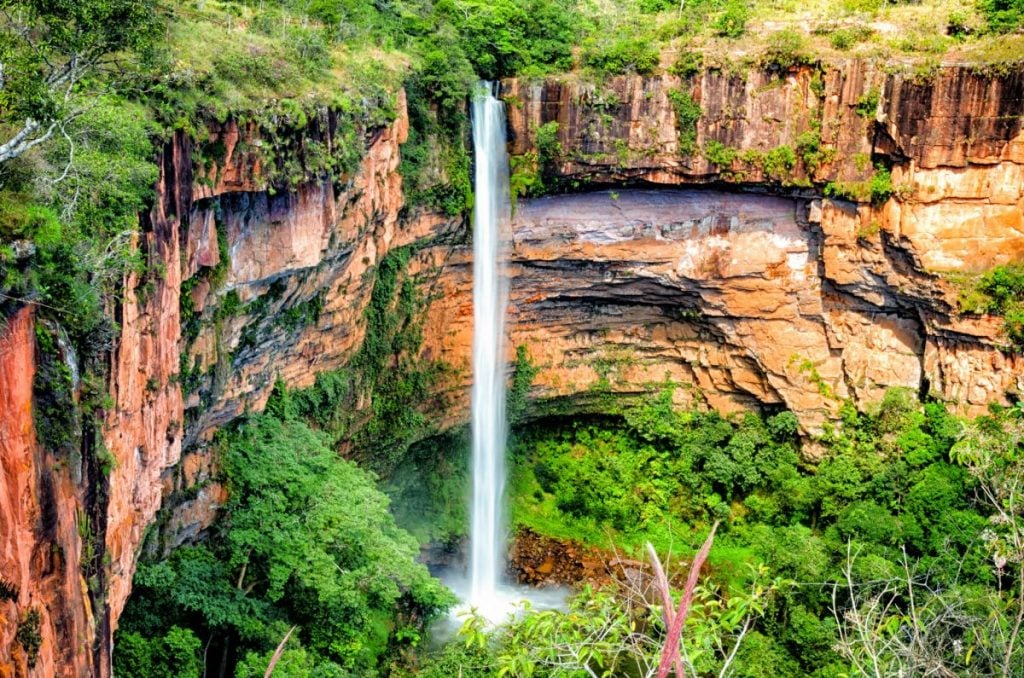
Photo: Chostakovis (WikiCommons)
The best hiking opportunities are usually to be found in the parques nacionais (national parks). Brazil has over 70 national parks, so you have plenty of options.
If you organize treks through tour companies, they will provide you with equipment. Maybe you’ll just need a solid pair of hiking boots. Bringing your own gear is always the best way to save cash though.
Consider buying a tent and a sleeping mat, or ditch both and get a hammock. A wilderness stove is also a good idea for making a kitchen wherever you go.
The Best Hikes in Brazil
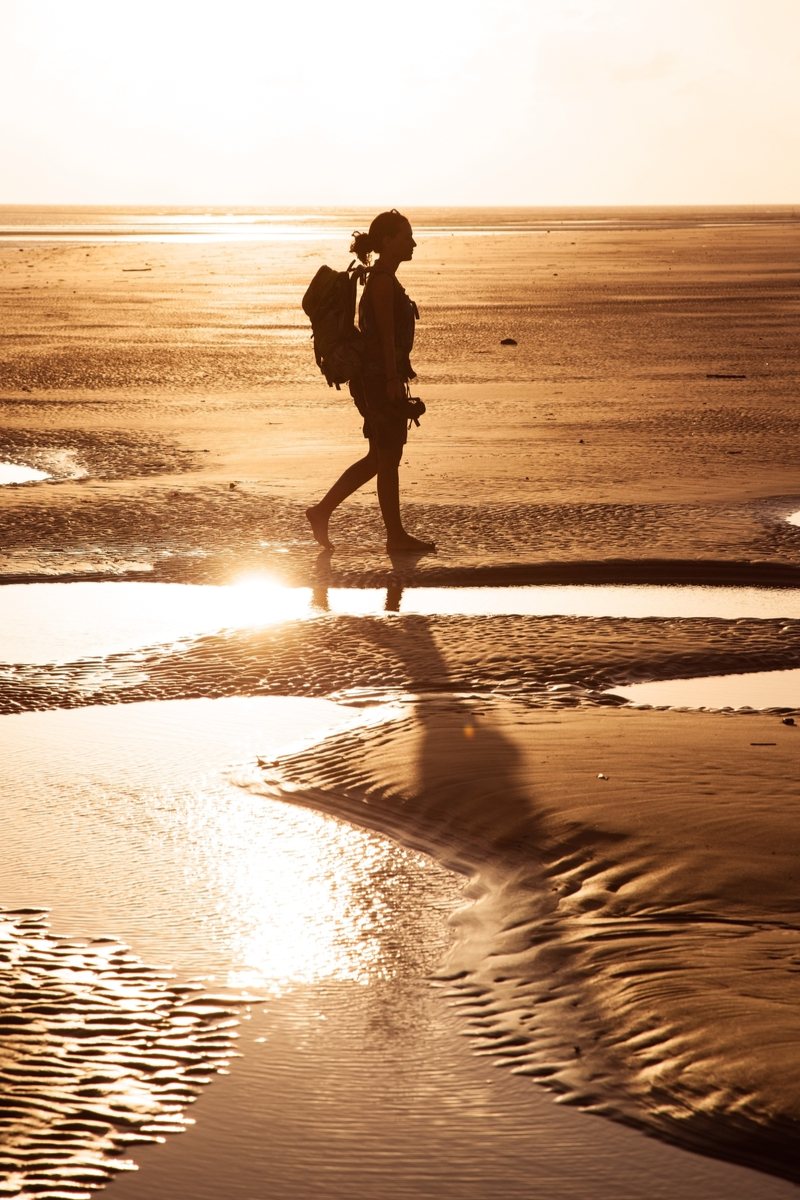
- Serra dos Órgãos, Rio de Janeiro – Large geological area located just north of Rio. Famous for picturesque, organ pipe spires. Passionate climbers may attempt these challenging mountains, including the iconic Dedo de Deus (Finger of God).
- Itatiaia, Rio de Janeiro – Oldest national park in Brazil. Good mix of rainforest (Mata Atlântica) and mountainous terrain. Hike up to the Prateleiras massif, or Pico das Agulhas Negras. Stumble across insane waterfalls.
- Aparados da Serra and Serra Geral – Twin parks created to protect the sensitive ecology of Brazil’s southern canyonlands. Located between Santa Catarina and Rio Grande da Sul. Most impressive is Itaimbezinho. Hike either above the rim, or into the reaches via multi-day wilderness backpacking trips.
- Chapada dos Veadeiros, Goiás – Huge waterfalls, and some of the oldest geology in the world. Latter is thought to have special properties. See the surreal Vale da Lua (Valley of the Moon) and picturesque Santa Barbara Falls. Hike via the park’s two longest trails: Canyons and Saltos.
- Chapada dos Guimarães, Mato Grosso – Dramatic highlands complete with waterfalls. Take a short trek to Guimarães’s most recognizable falls – Veú de Noiva. Or see several via the Circuito das Cachoeiras. Hike on the São Jerónimo trail for the panoramic view.
- Chapada Diamantina – One of Brazil’s premier outdoor areas. Consists of escarpments, waterfalls, and underground pools. Must see is one of Brazil’s highest waterfalls, Cachoeira da Fumaça, and the perfectly blue water of Poço Encantado cave. Spend a few hours hiking up to Morro do Pai Inácio for a great view, or several days trekking into the Vale do Patí.
Diving in Brazil
Fernando de Noronha is the best place to go diving in Brazil. Noronha is an archipelago located about 200 miles northeast of Recife in the middle of the Atlantic. Most arrive by plane, but there are ferries running during the high season.
There are lots of coral and sea caves to explore here. The coral isn’t too bright, but the colourful tropical fish more than make up for this. Discover dolphins, turtles, and the occasional whale shark.
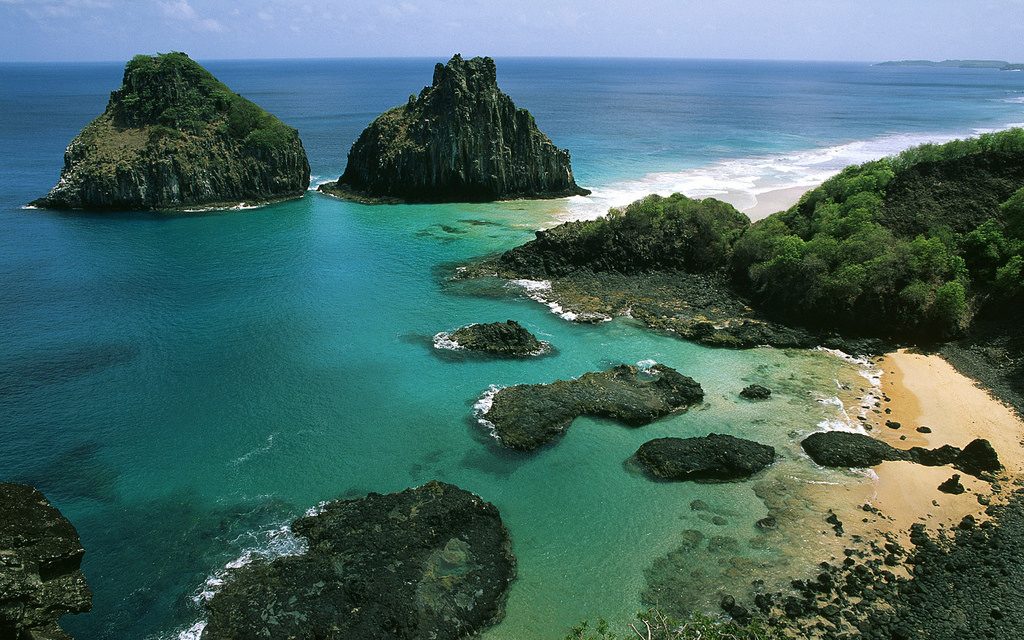
Photo: Y?yuán m (Flickr)
Diving aside, Fernando de Noronha is one of the most beautiful places in Brazil. Many locals call it “the Hawaii of Brazil”.
Because of its natural significance, Fernando de Noronha is a designated national park. For that reason, the islands are very regulated in order to preserve the ecosystem. There are very few roads and very few human settlements.
Visiting some islands in the archipelago require permits. No matter where you go, expect high prices; potentially the highest prices that you’ll find while backpacking Brazil.
Joining an Organized Tour in Brazil
For most countries, Brazil included, solo travel is the name of the game. That said, if you are short on time and energy while backpacking Brazil, or you just want to be part of an awesome group of travellers, you can opt to join an organized tour.
G Adventures is a solid down-to-earth tour company catering to backpackers just like you, and their prices and itineraries reflect the interests of the backpacker crowd. You can score some pretty sweet deals on epic trips in Brazil for a fraction of the price of what other tour operators charge.
Final Advice Before Visiting Brazil
Now, armed with your new backpacking Brazil travel guide, you are ready to take on the epic journey. This is one truly mighty country. Brazil will open your eyes and brand your soul.
While this is invigorating, keep your head screwed on. Brazil is one of those countries that doesn’t stop for anyone. No matter what’s going on over there, the hamster wheel is still running.
You’ll need to bring your best sense of adventure. Using that Portuguese will help you out too.
Brazil tests you, changes you, and you leave feeling like you’ve achieved something massive. Those stories of travelling here are good to tell for the rest of your life. Get ready to be humbled by a nation with a very large heart.
Party hard and party smart. It’s going to be something you won’t see anywhere else in the world.
There’s no doubt: Brazil is a special place. But you’re going to find that out for yourself. Come back and tell me your stories when you do.


And for transparency’s sake, please know that some of the links in our content are affiliate links. That means that if you book your accommodation, buy your gear, or sort your insurance through our link, we earn a small commission (at no extra cost to you). That said, we only link to the gear we trust and never recommend services we don’t believe are up to scratch. Again, thank you!


